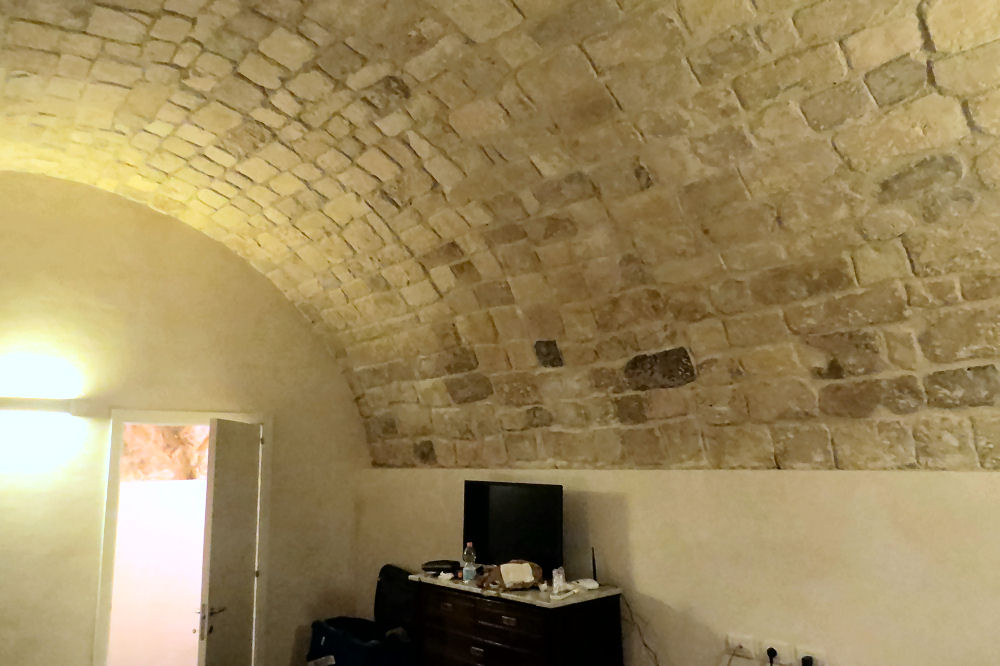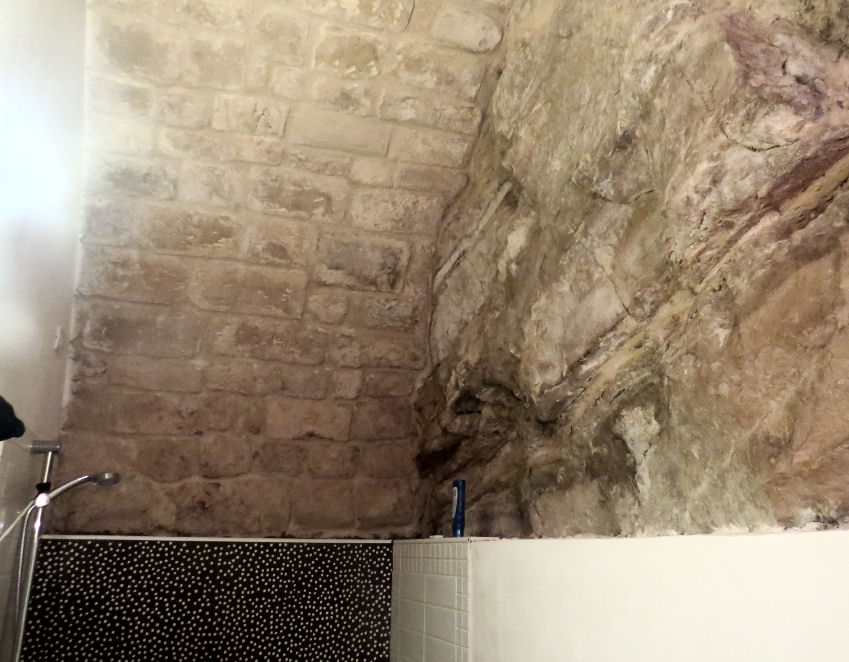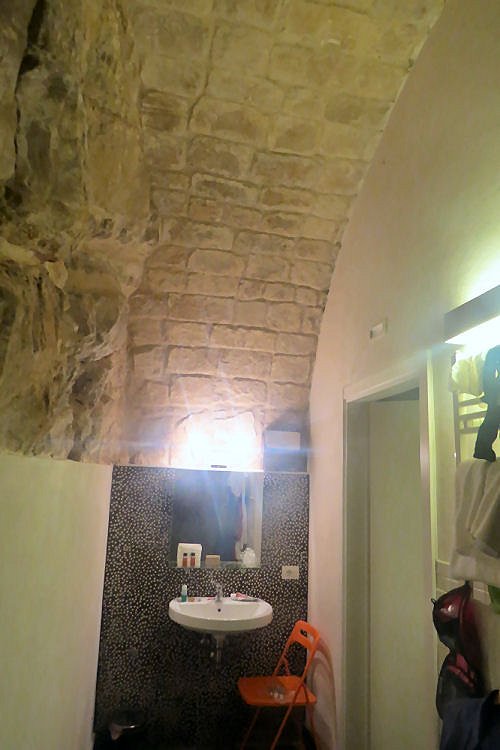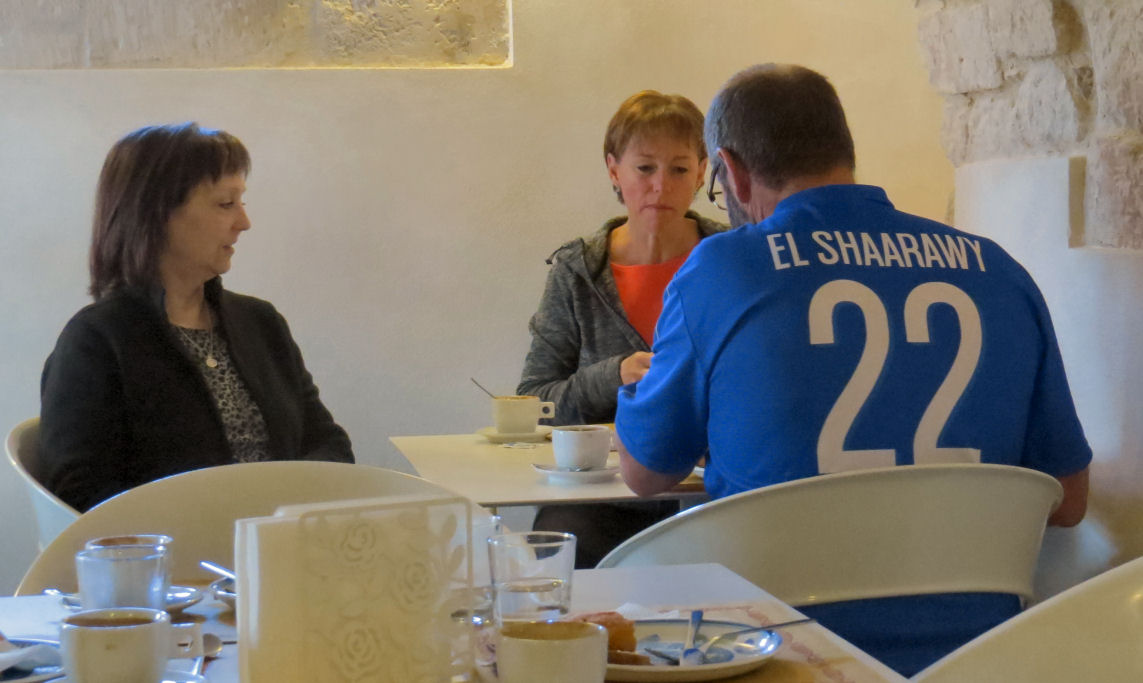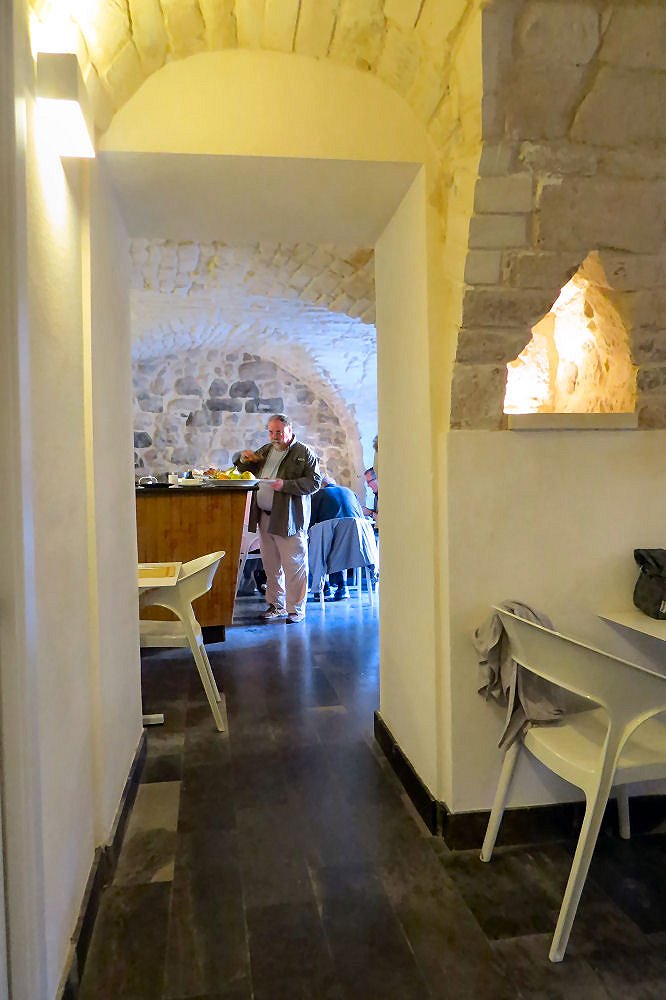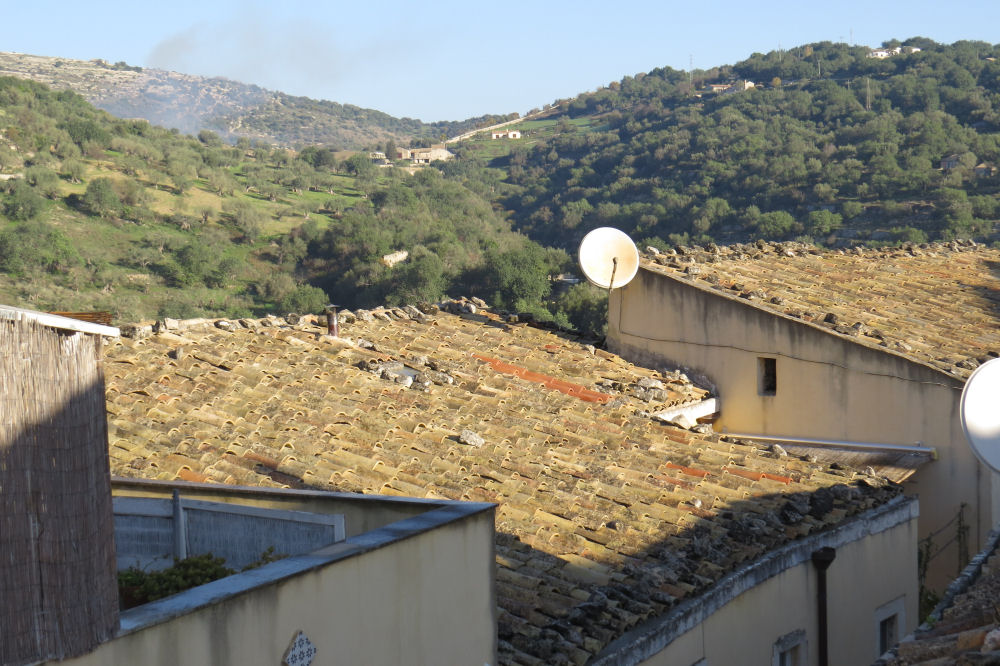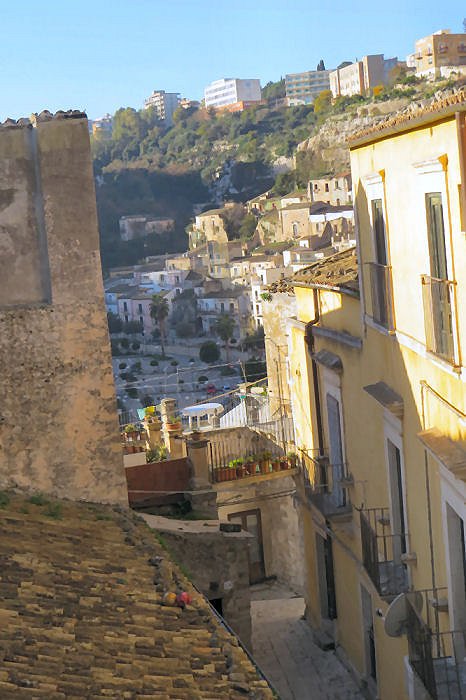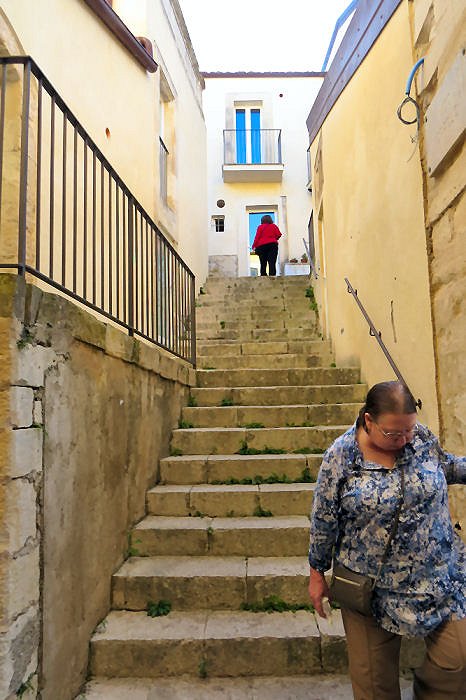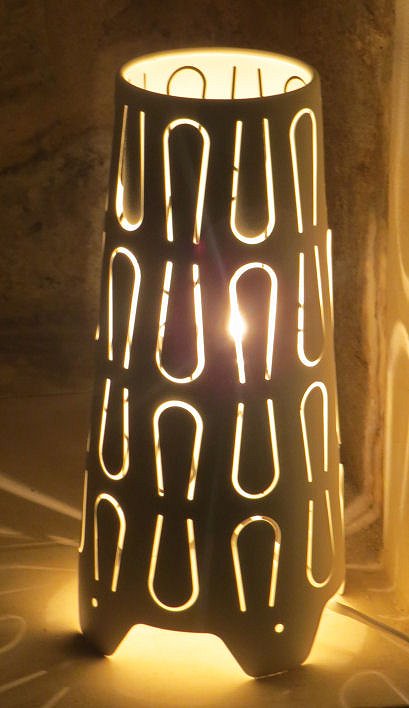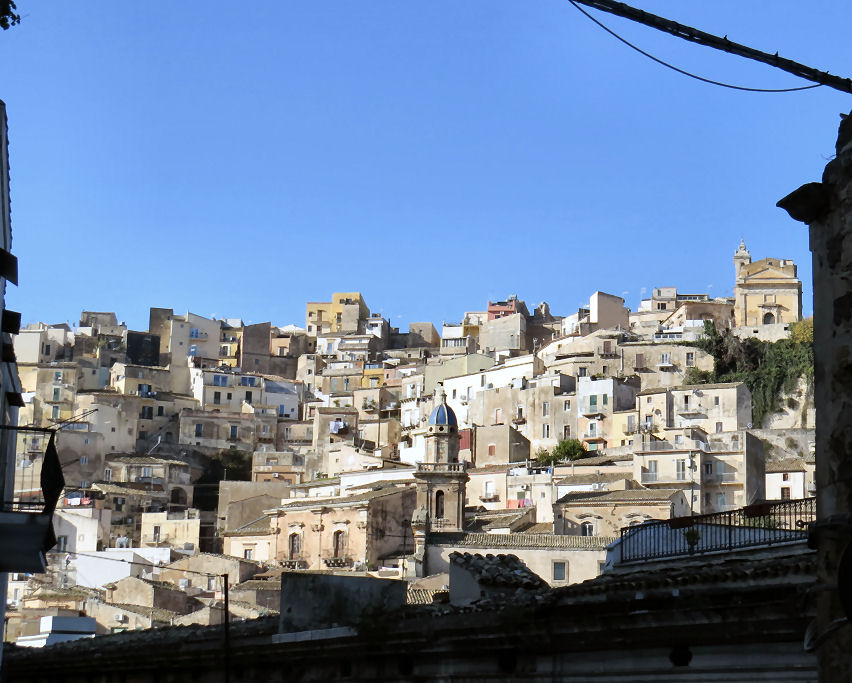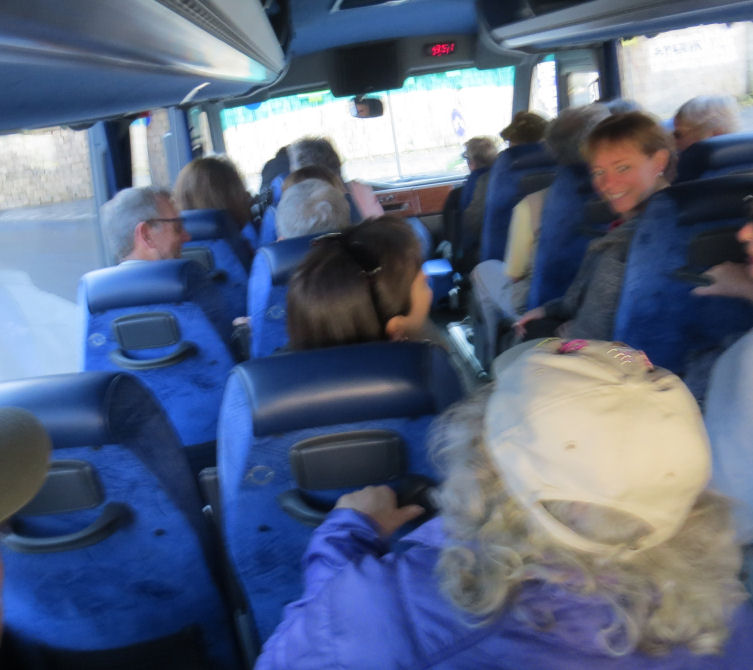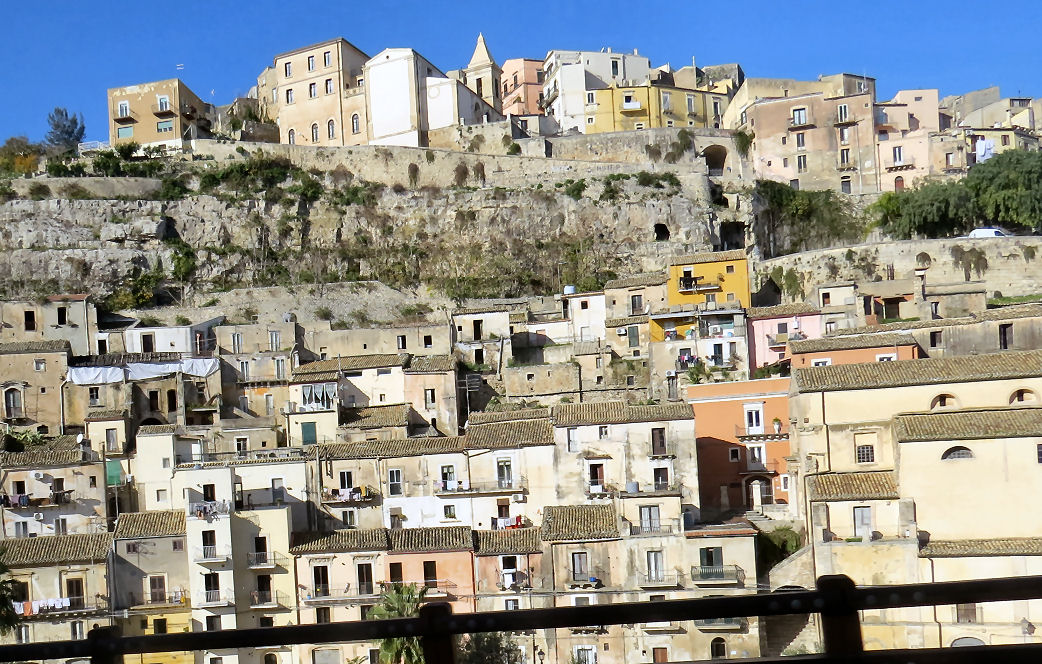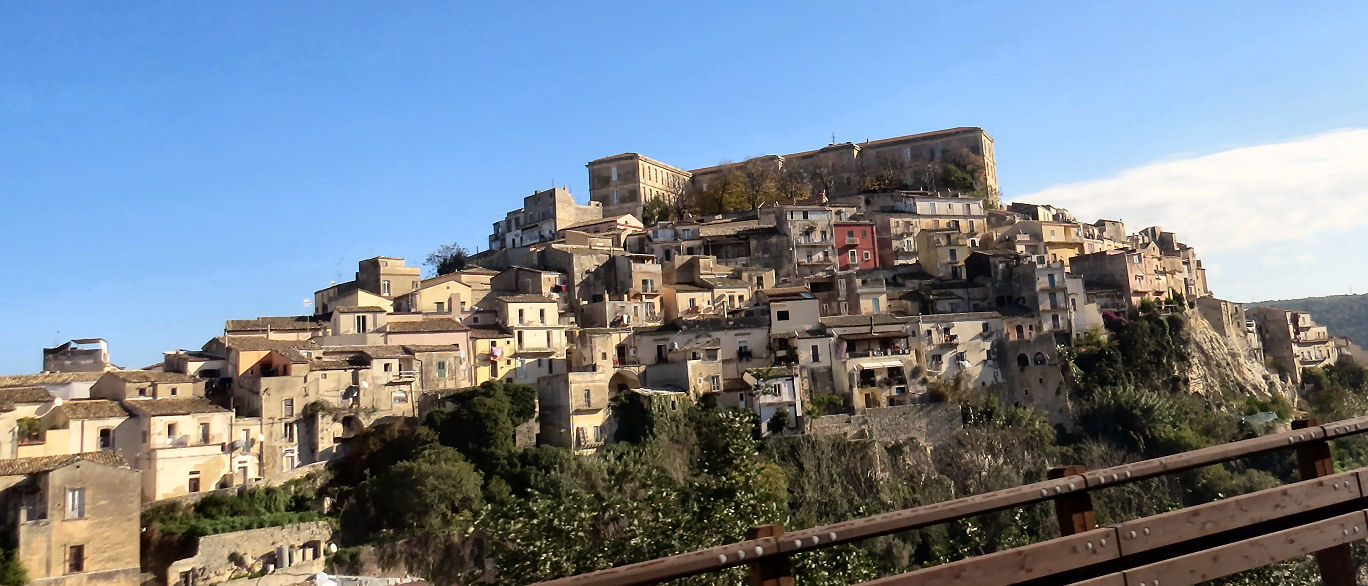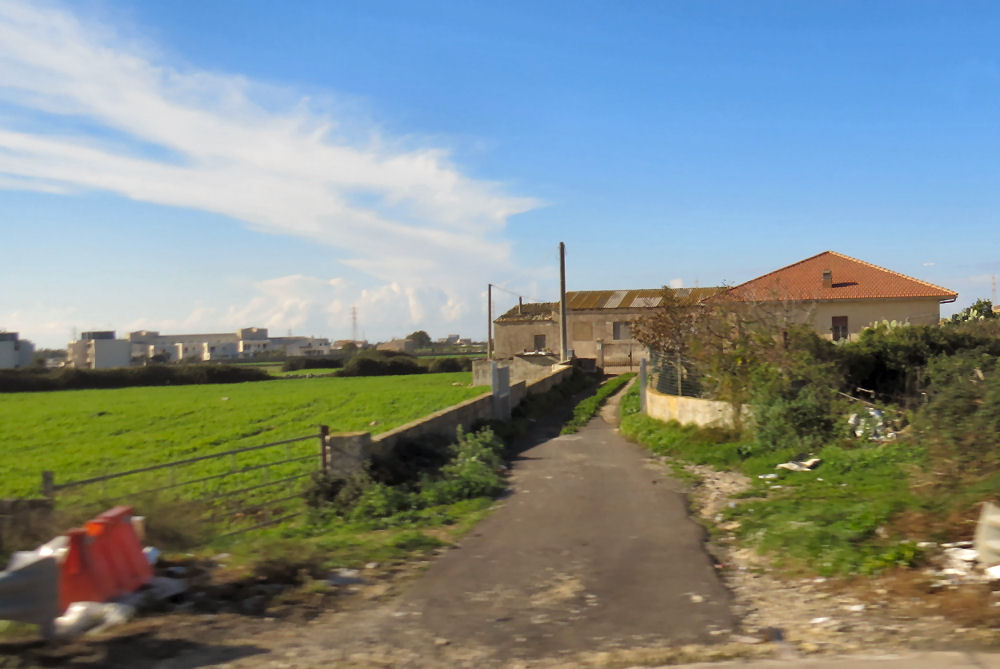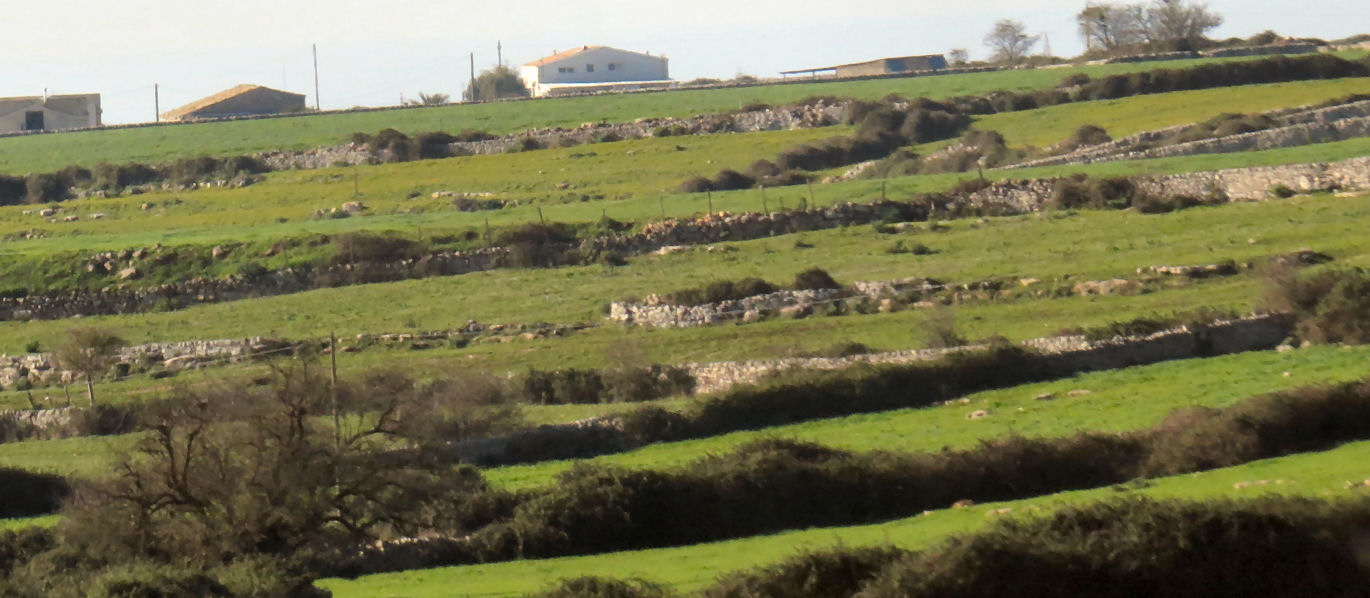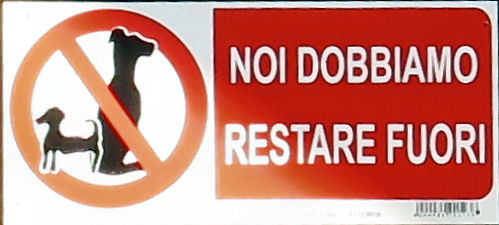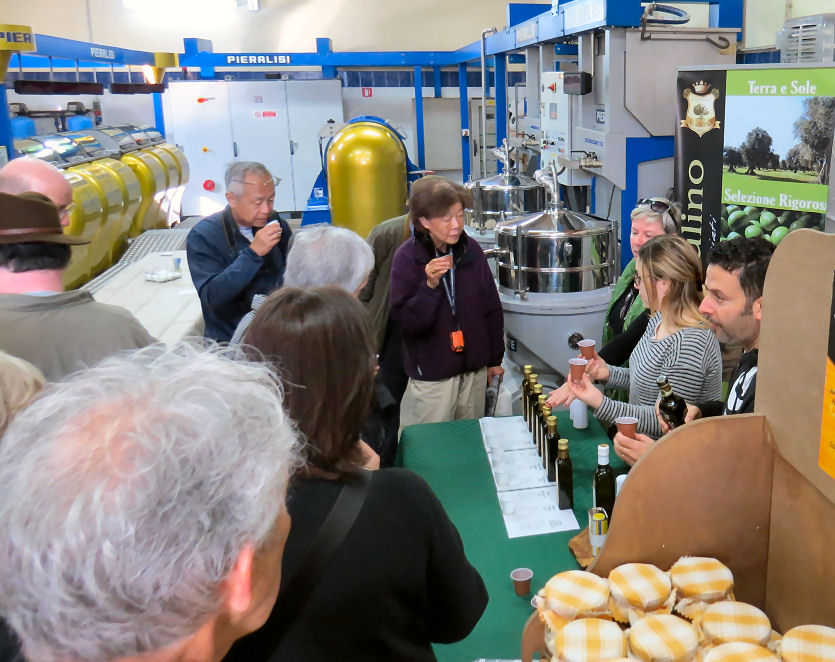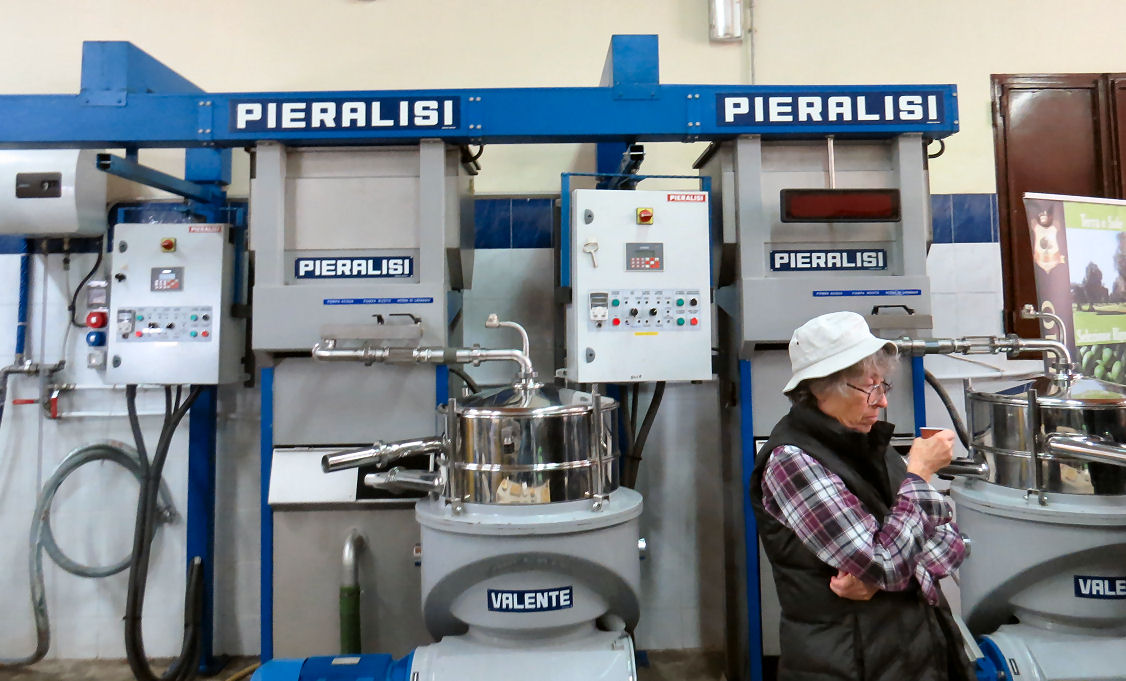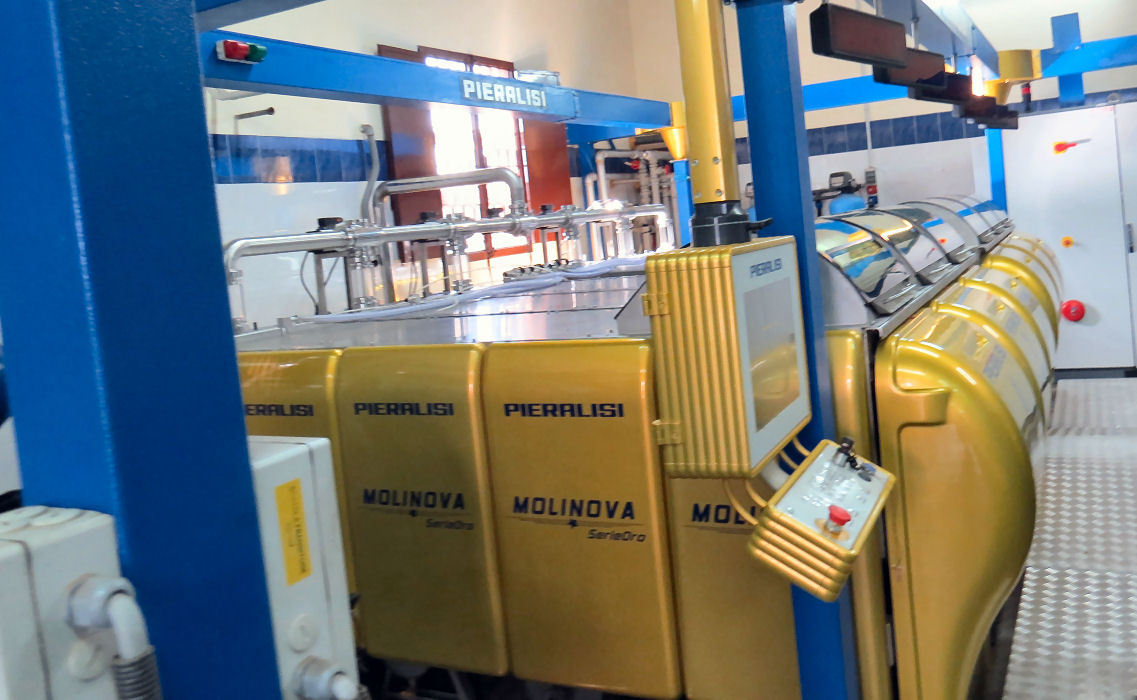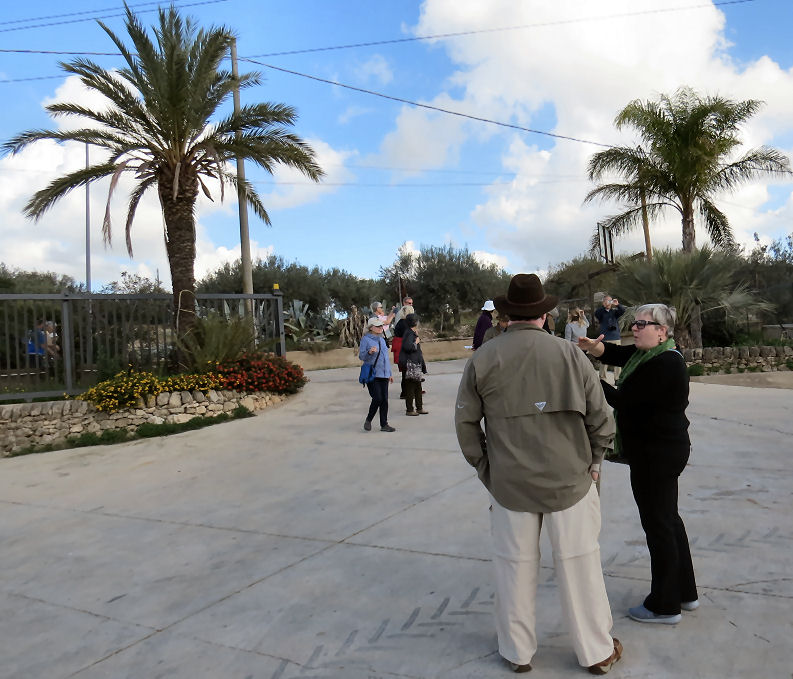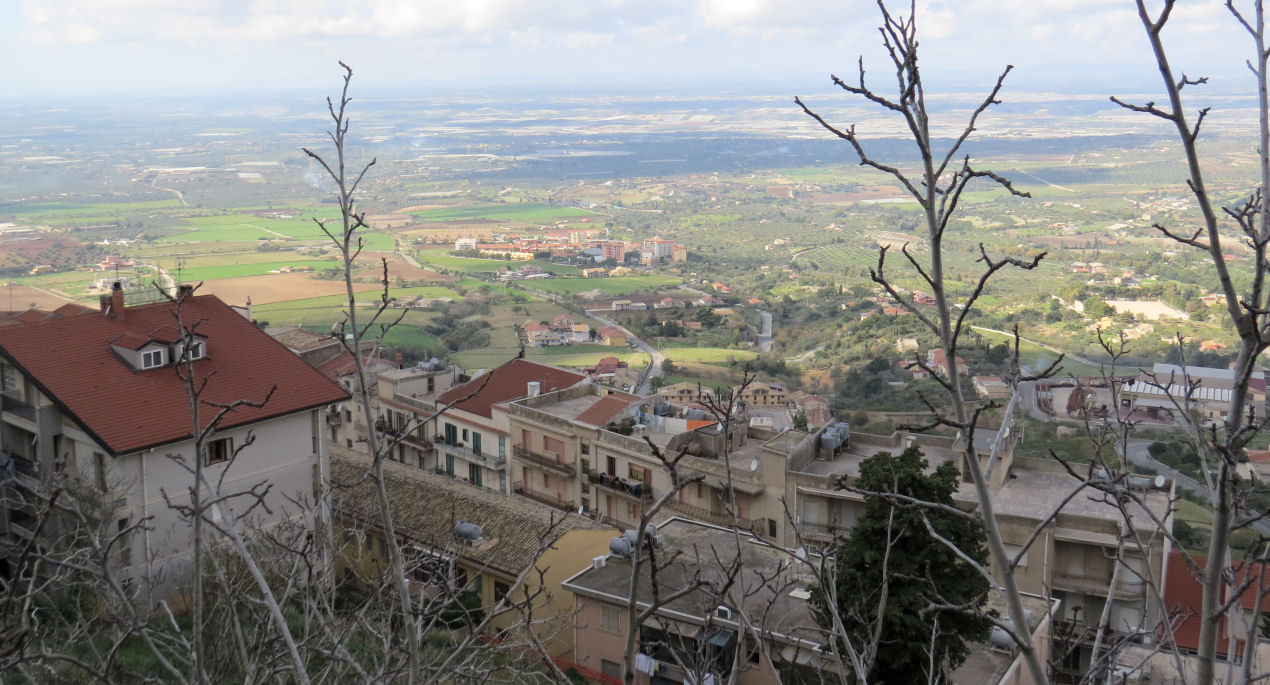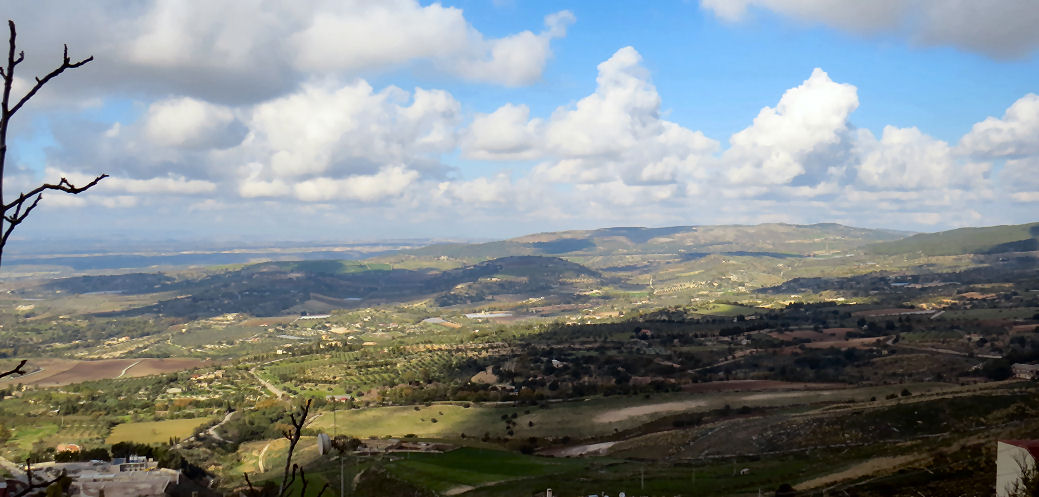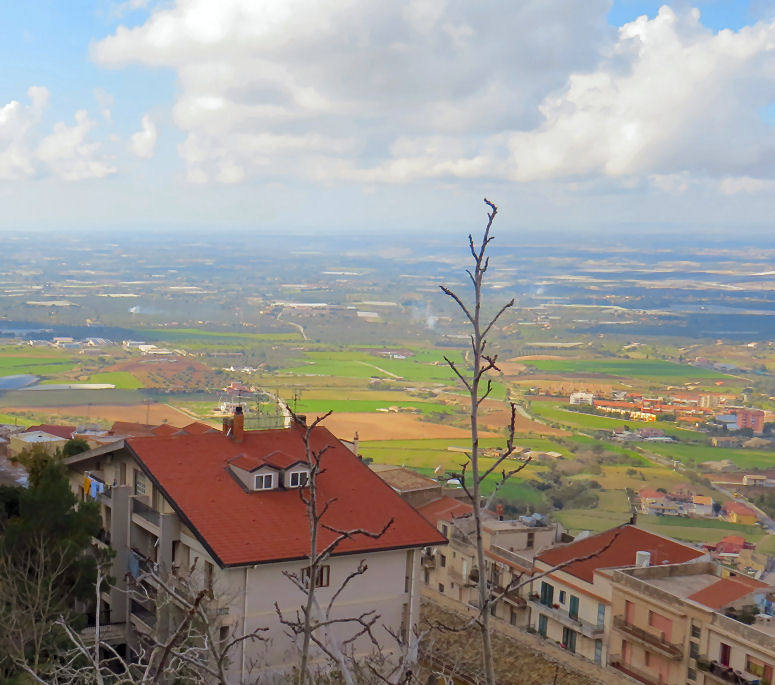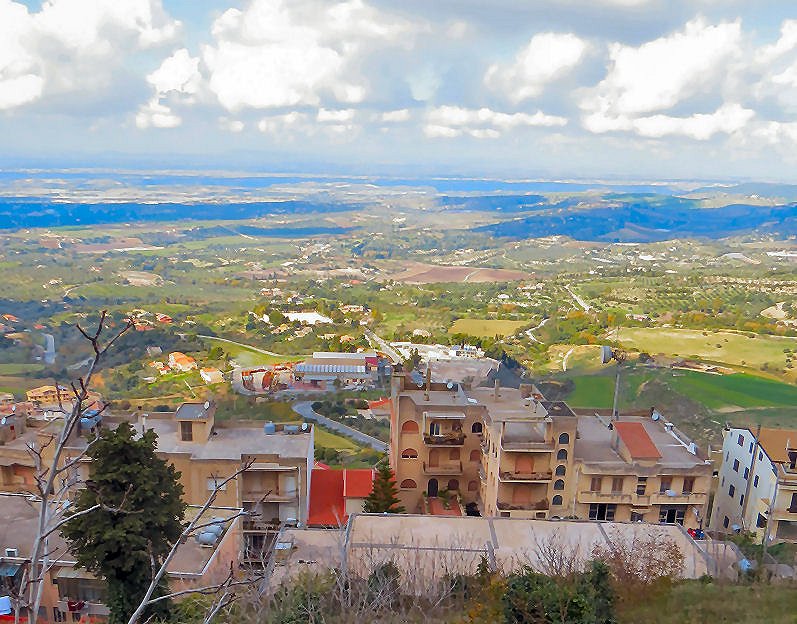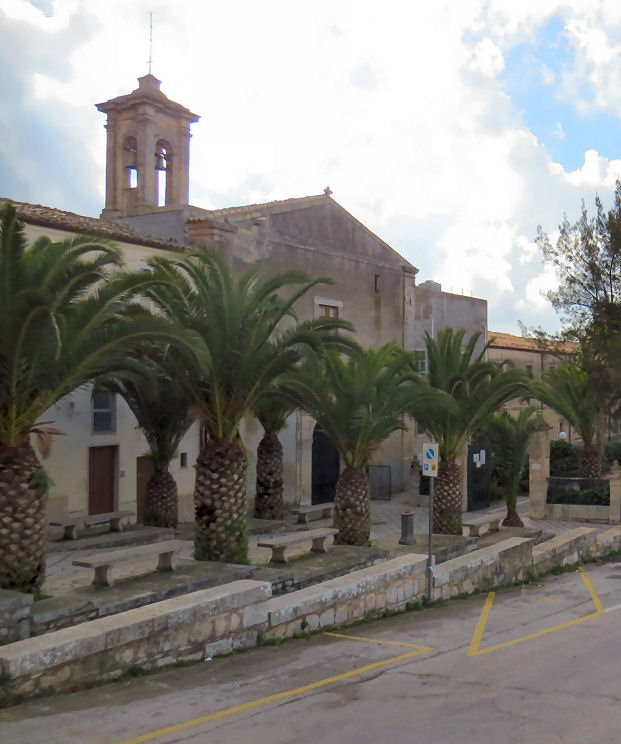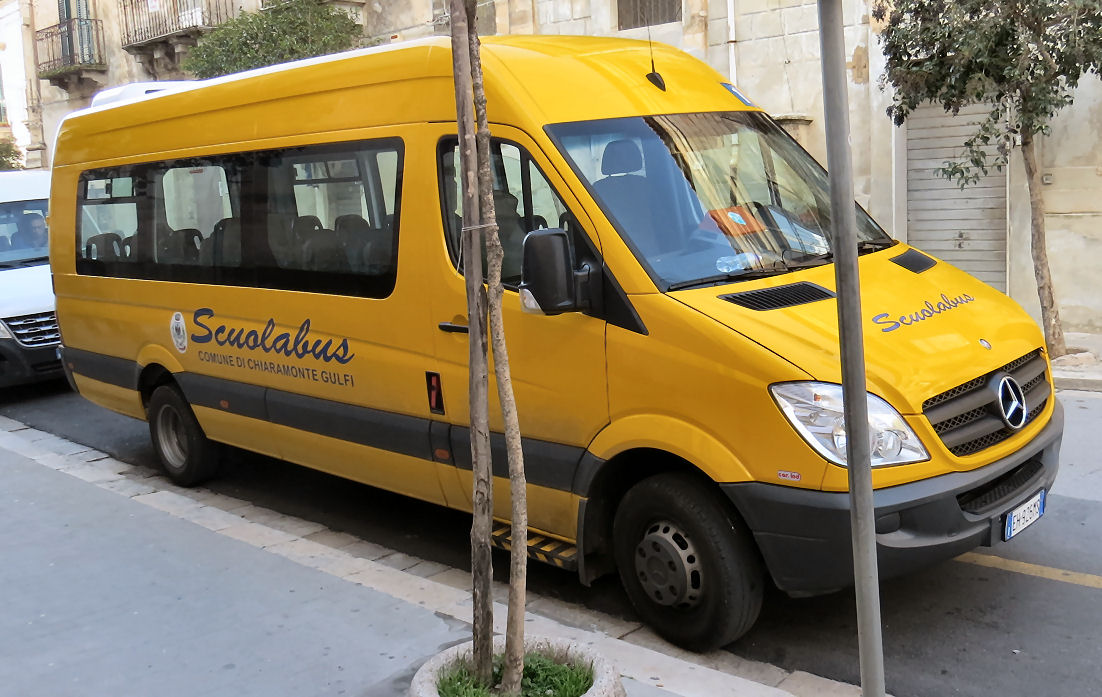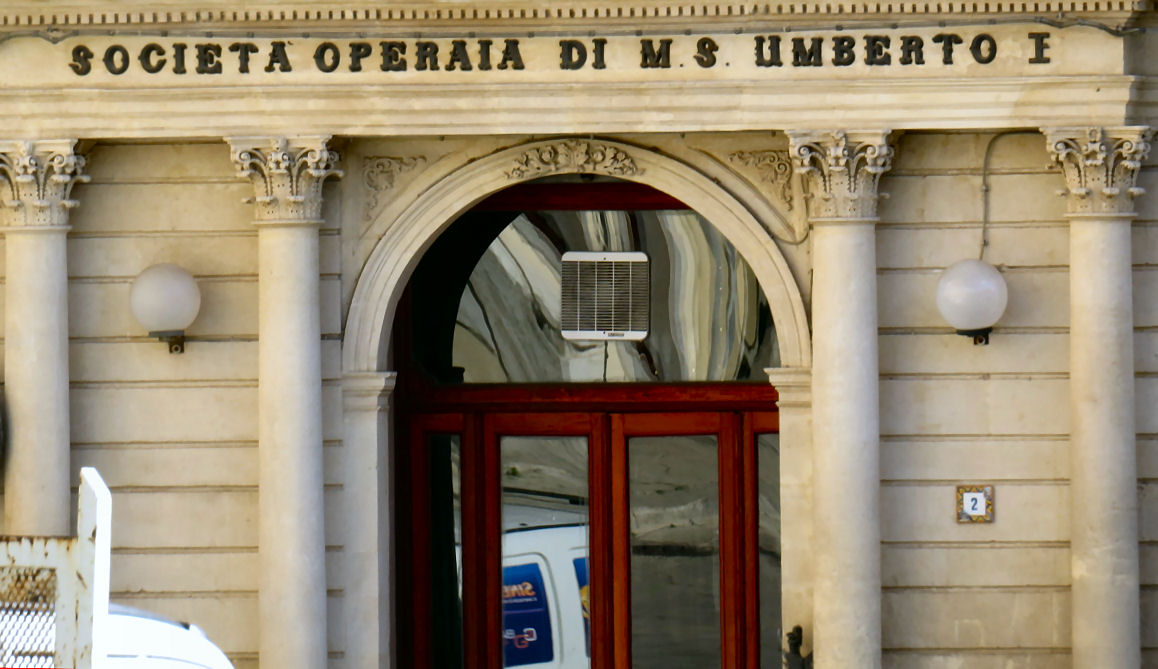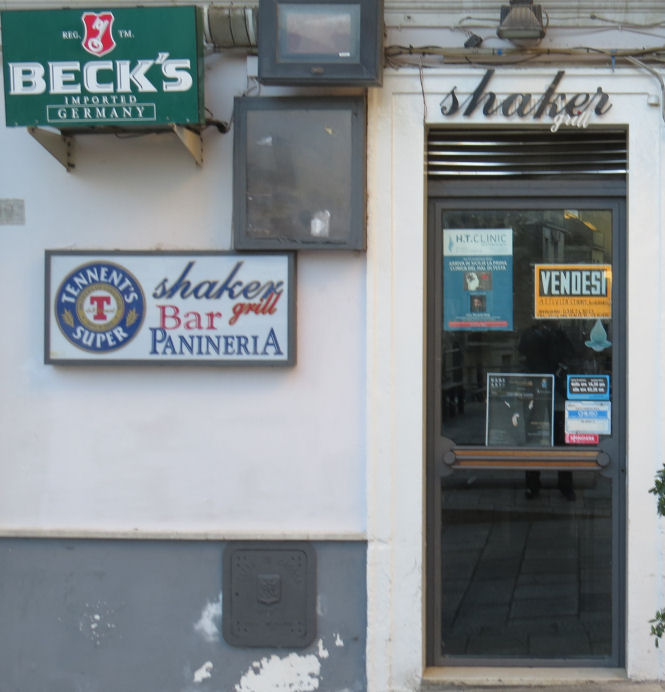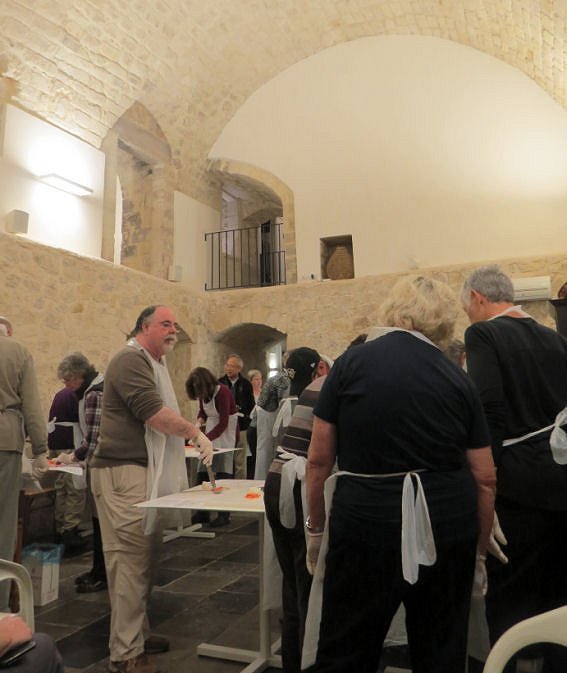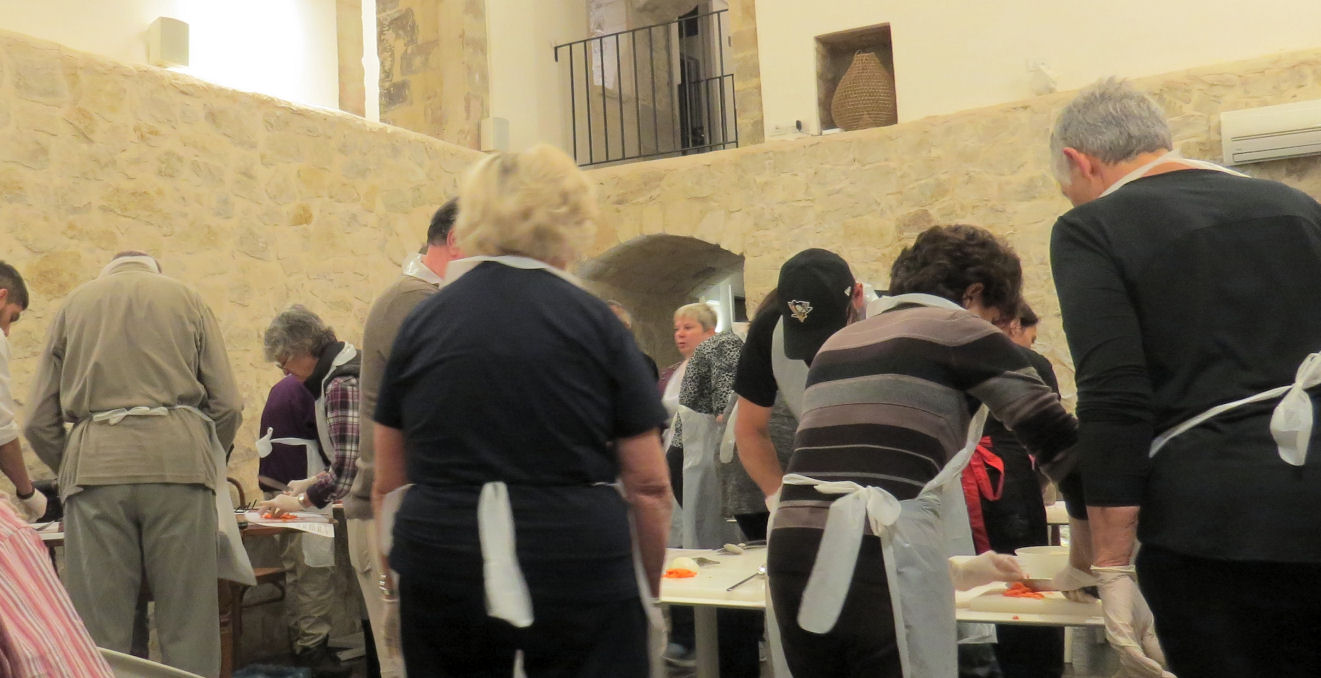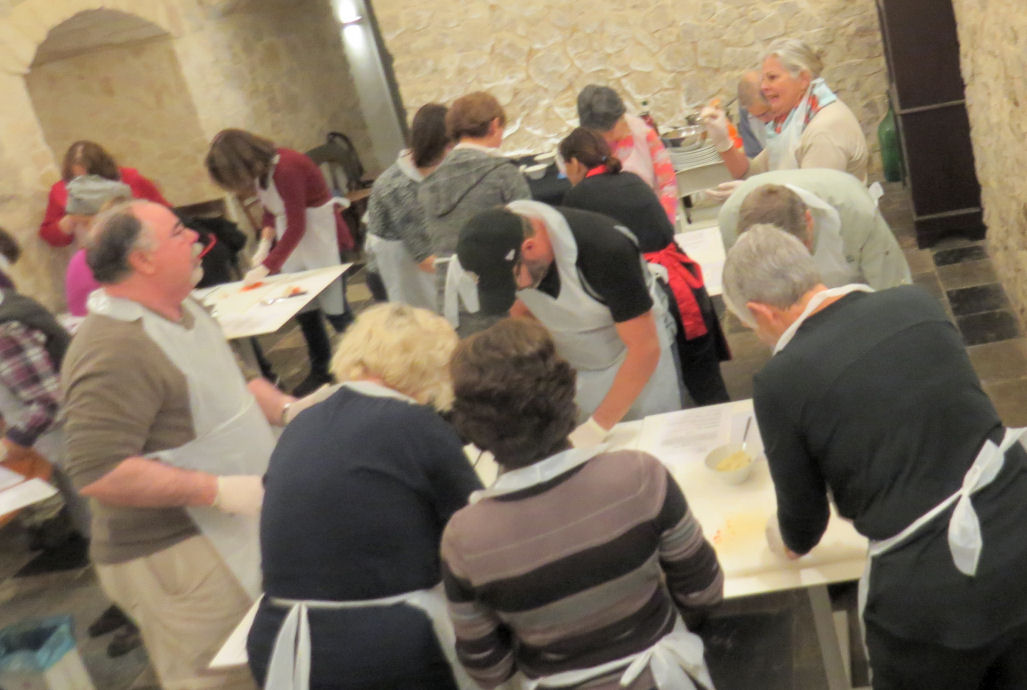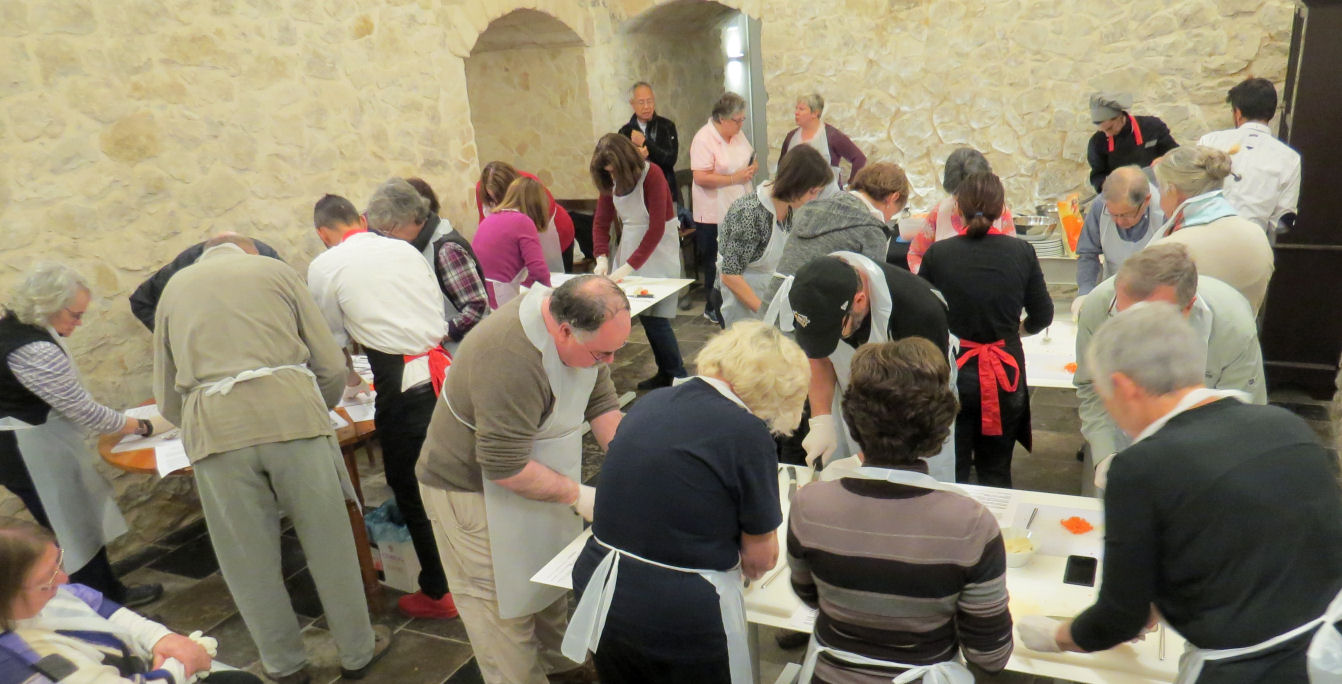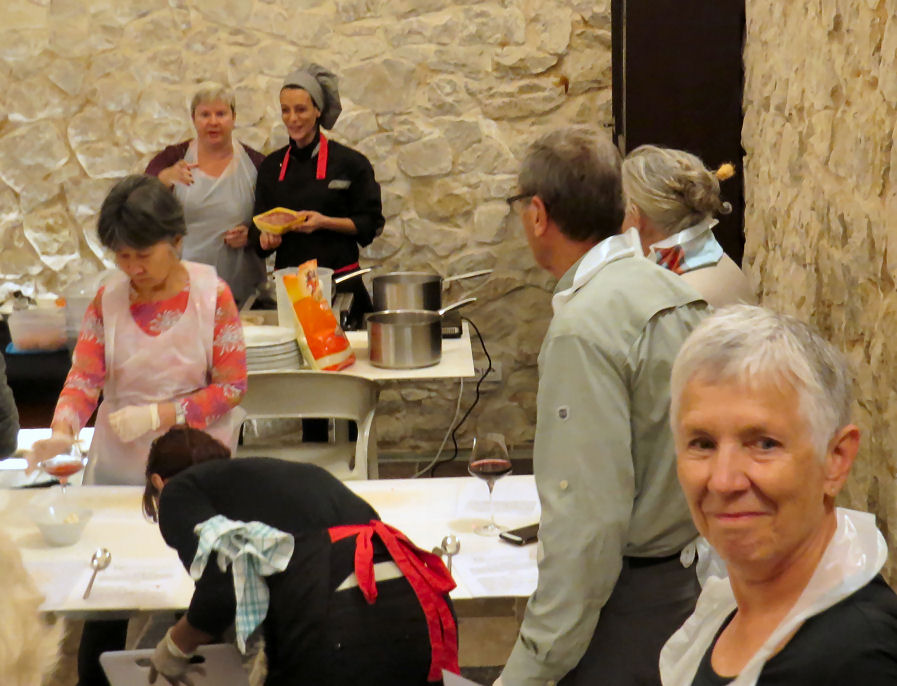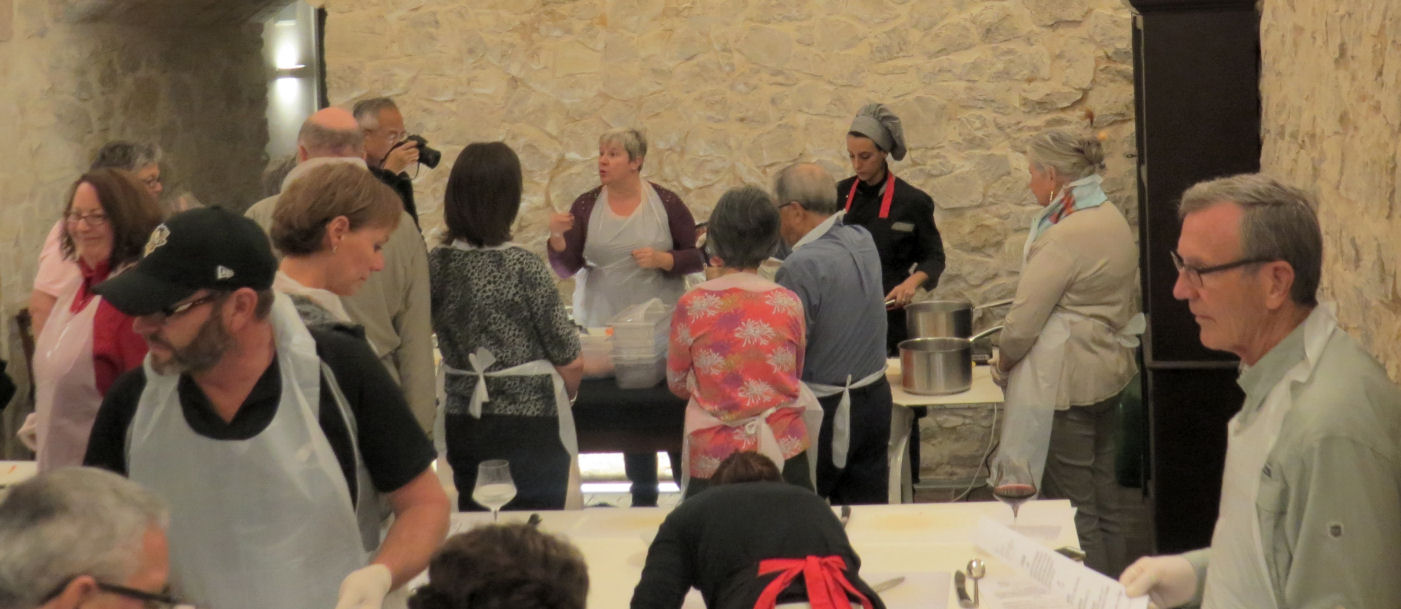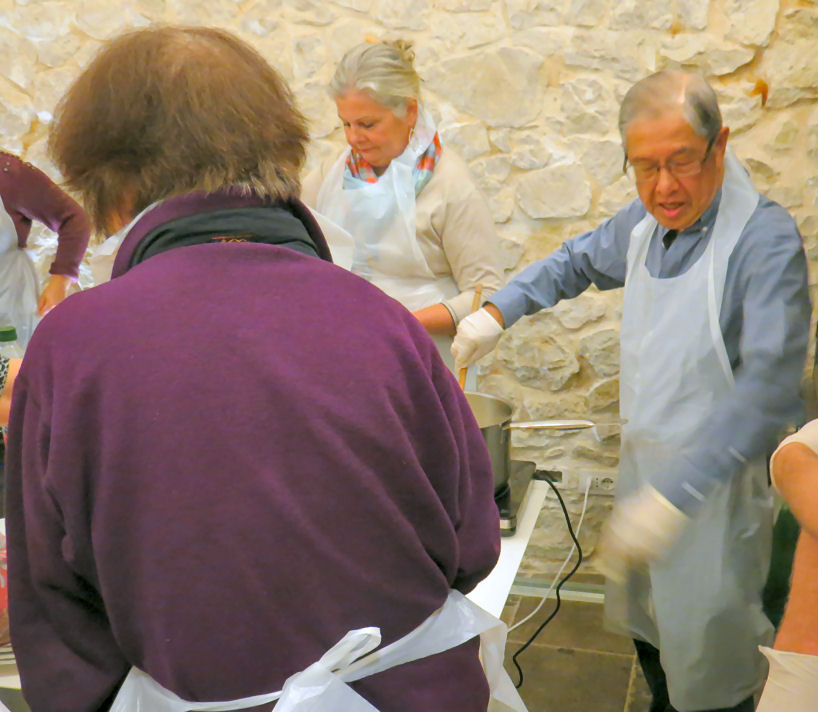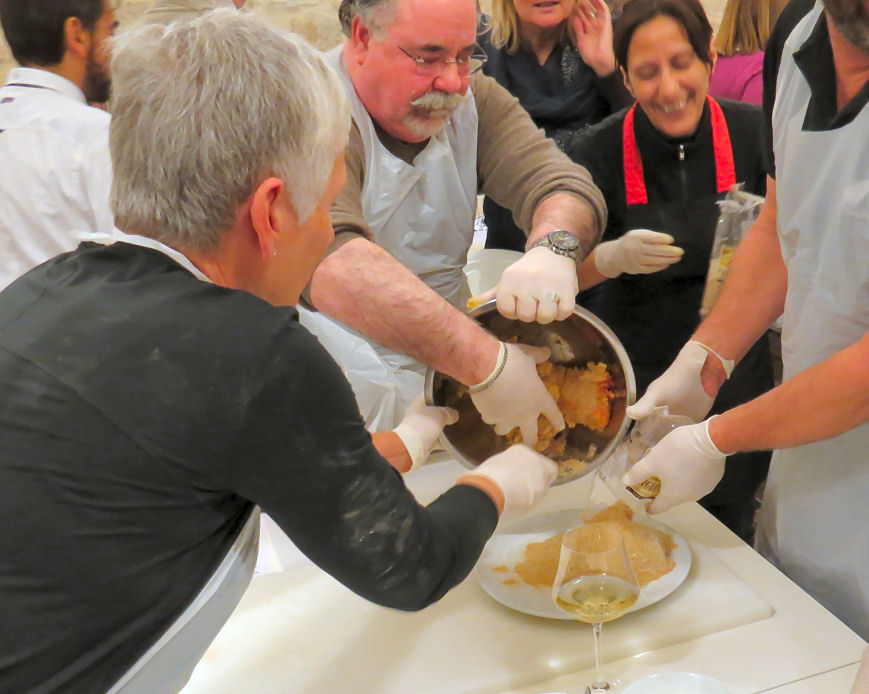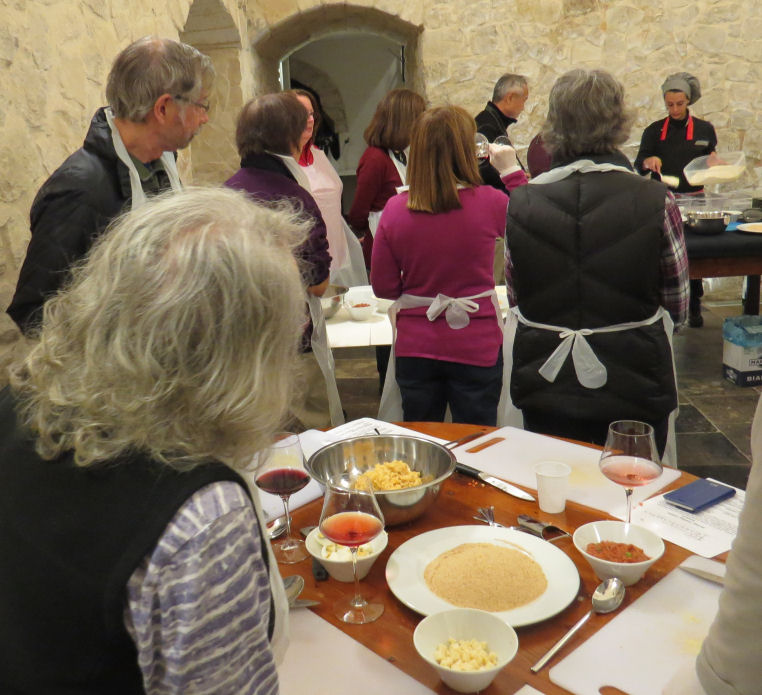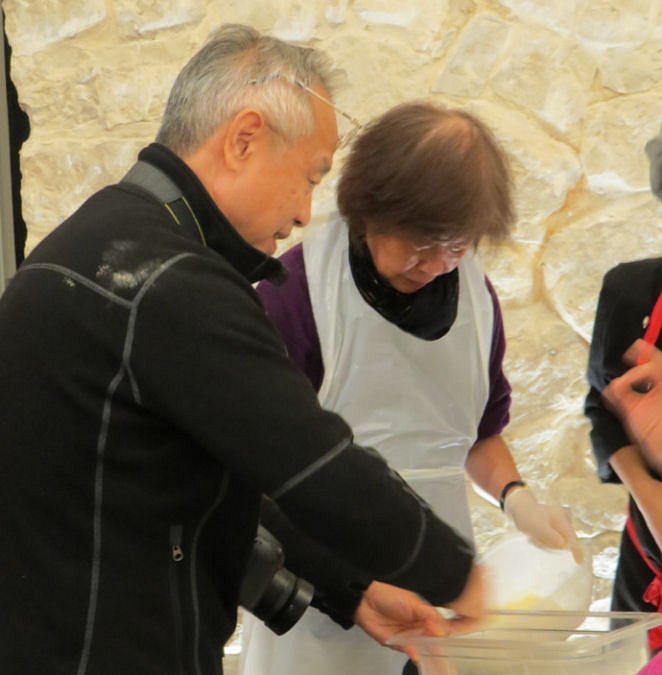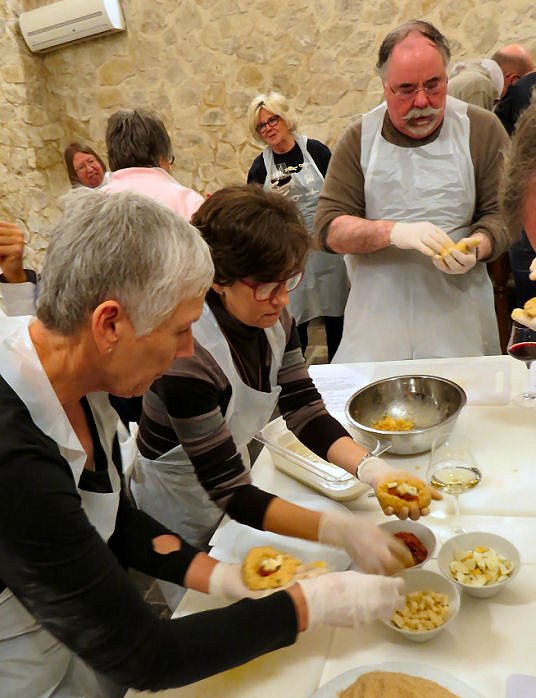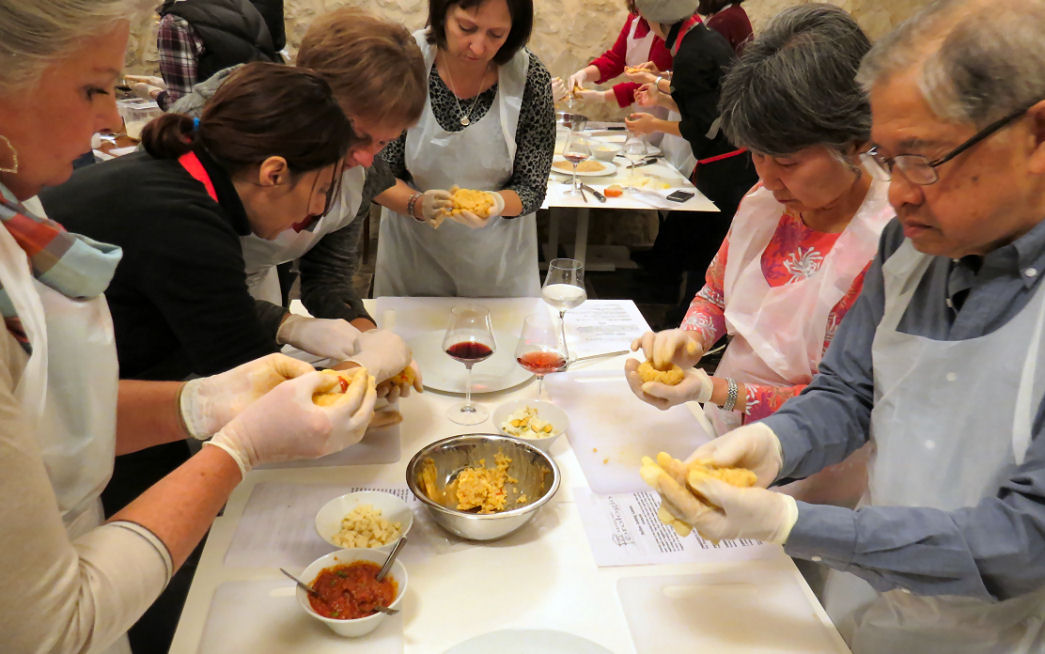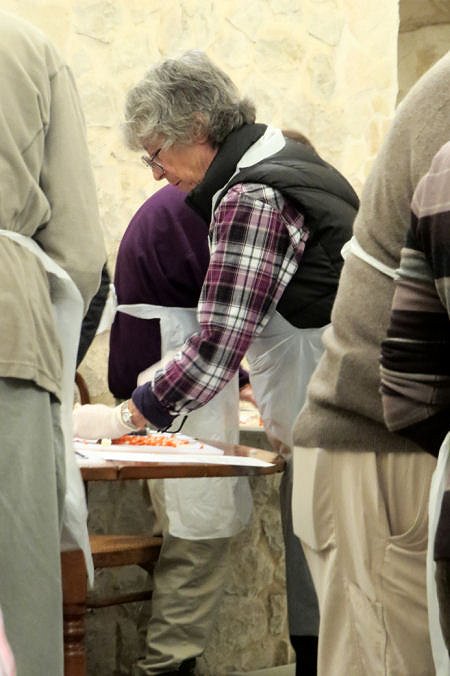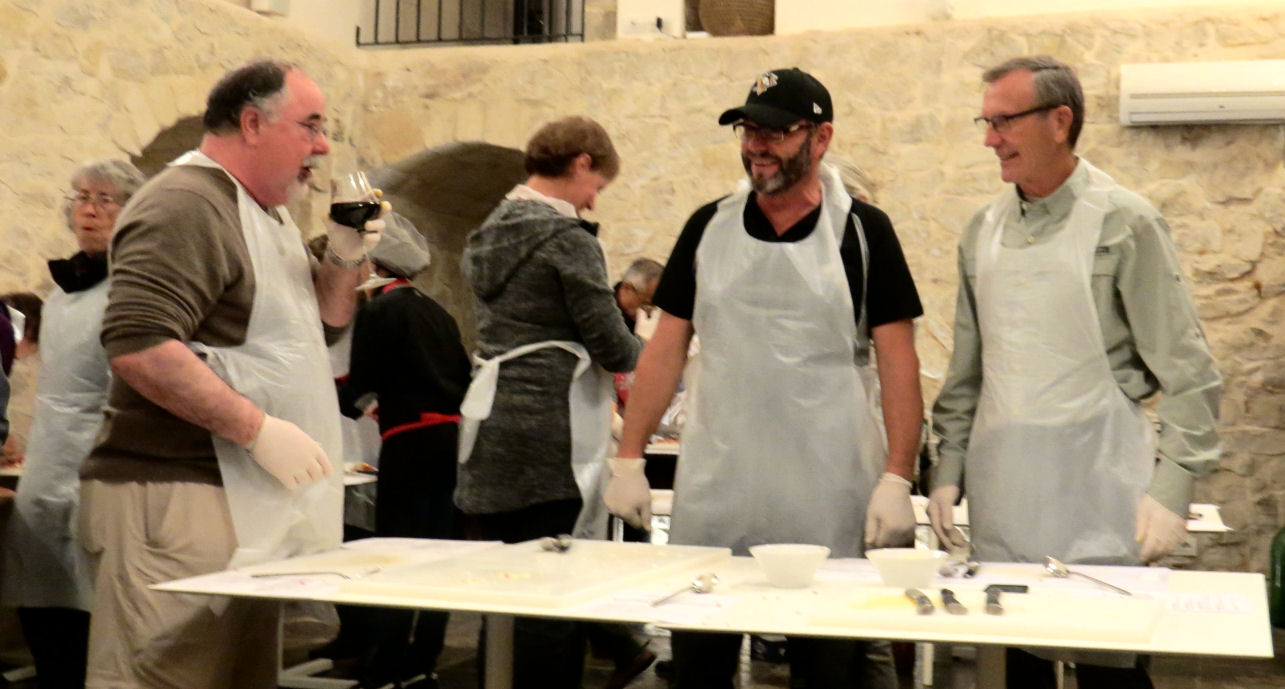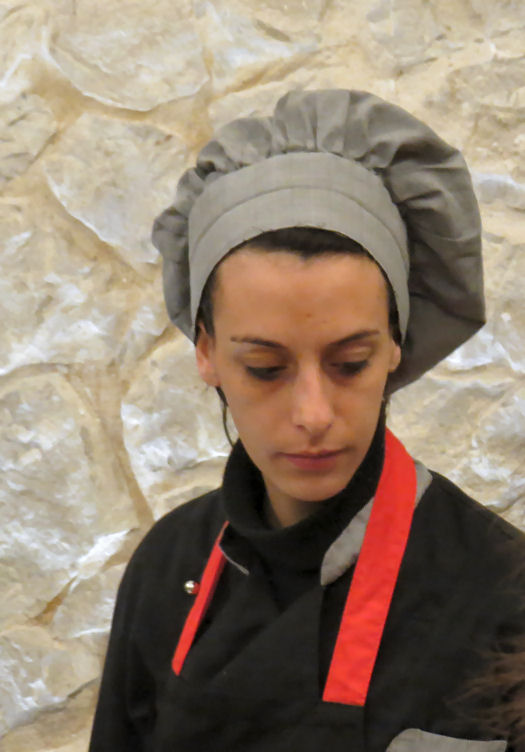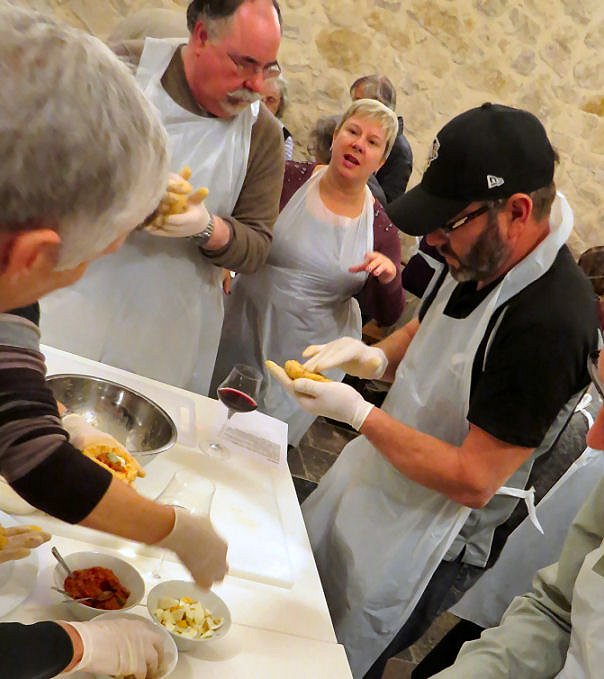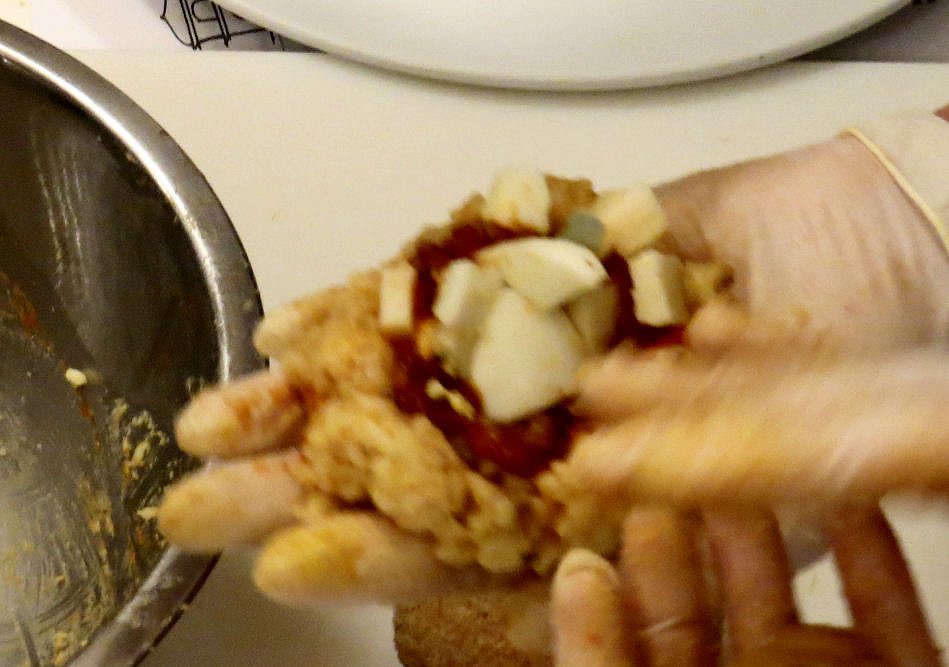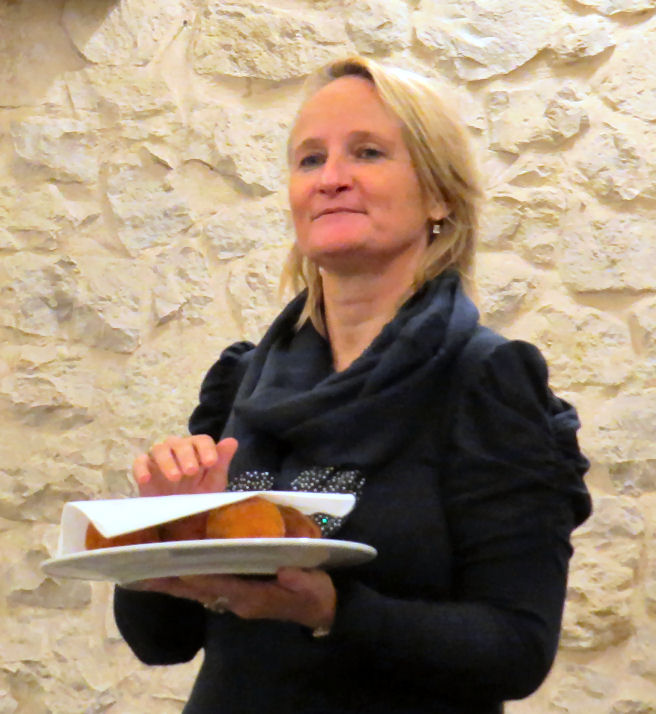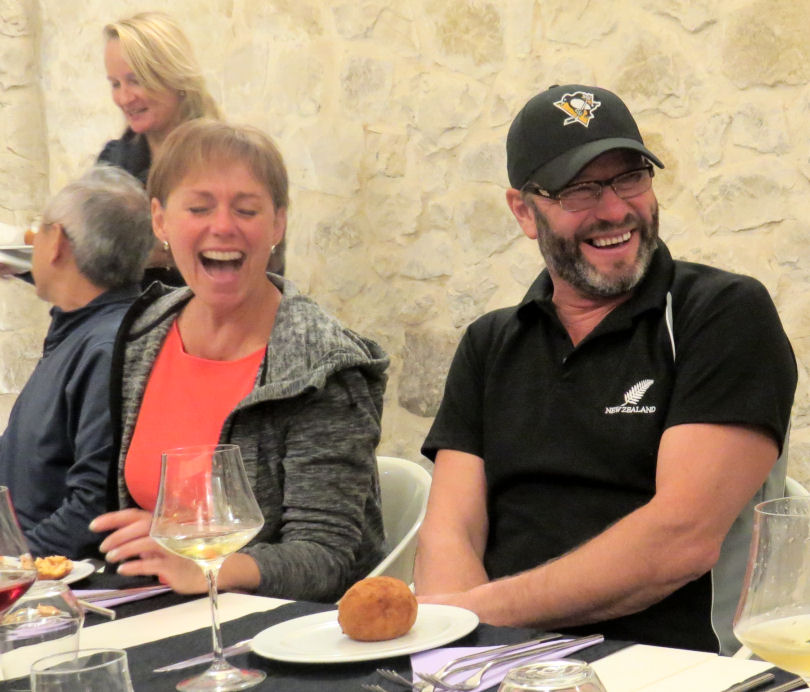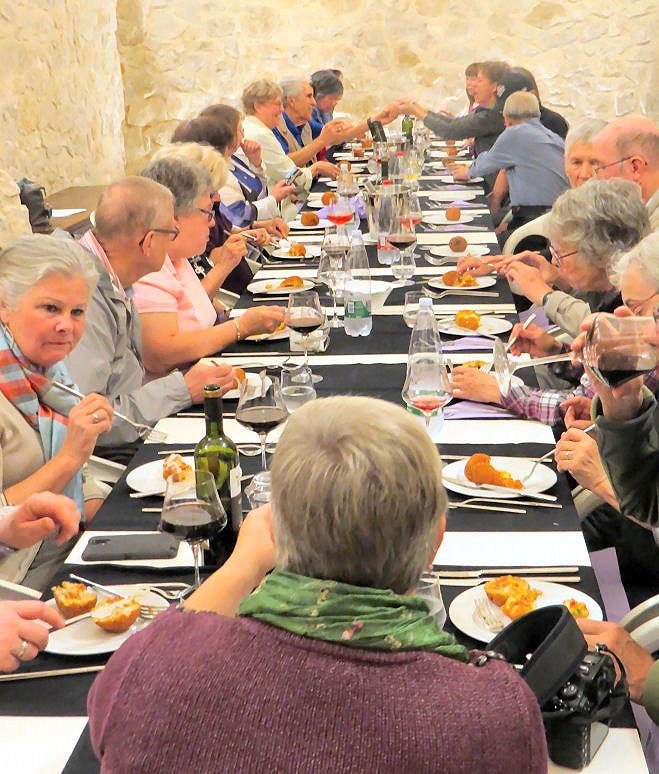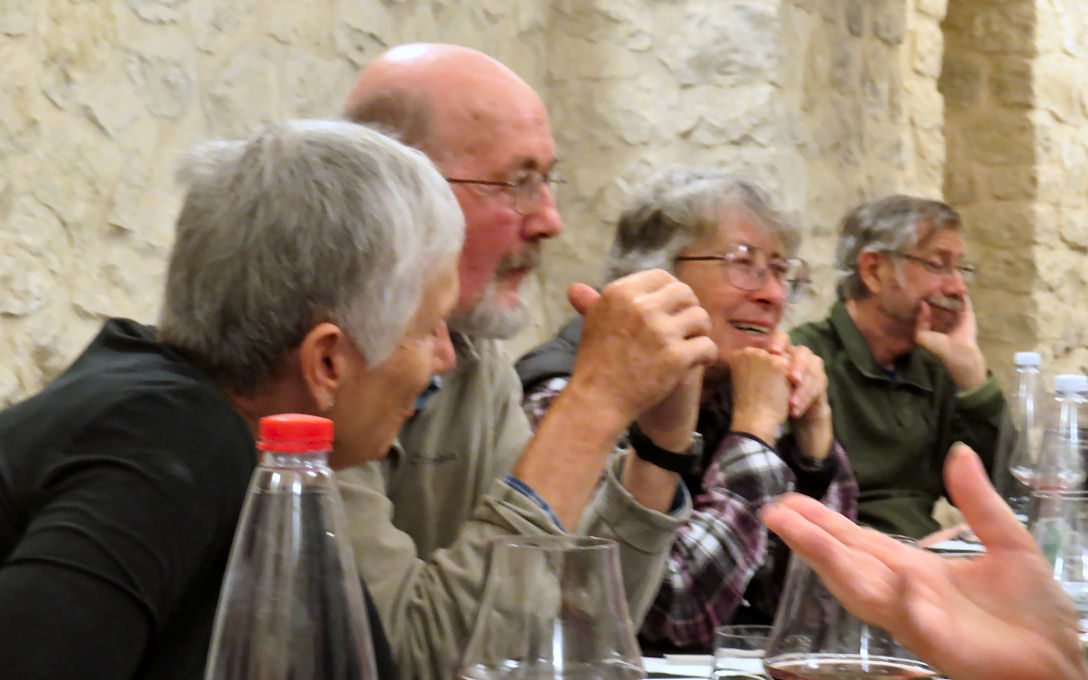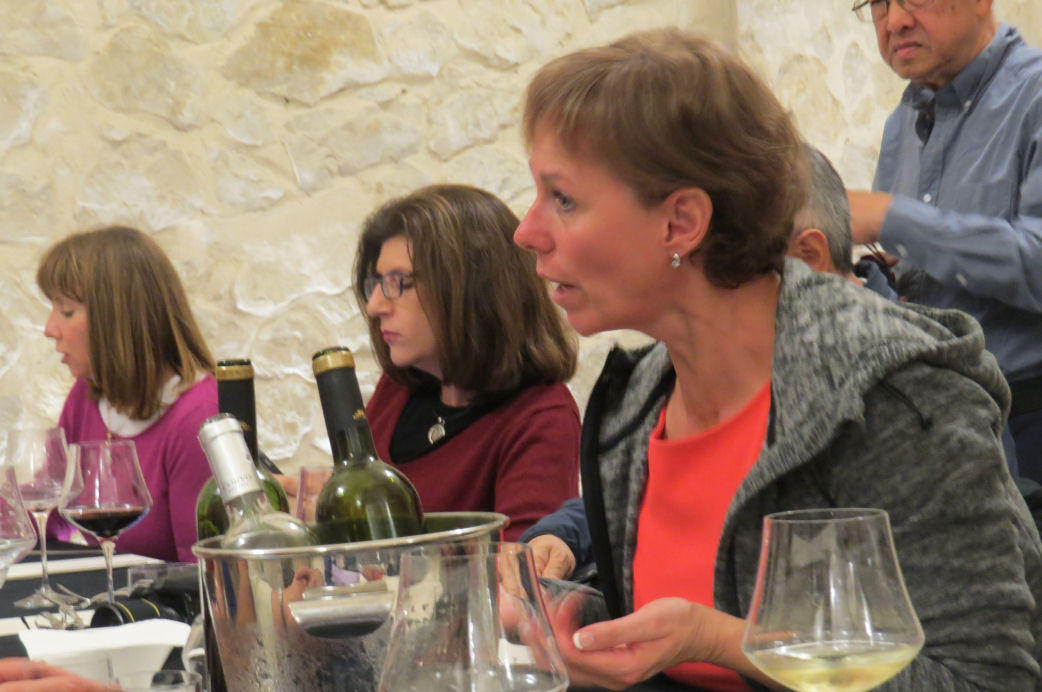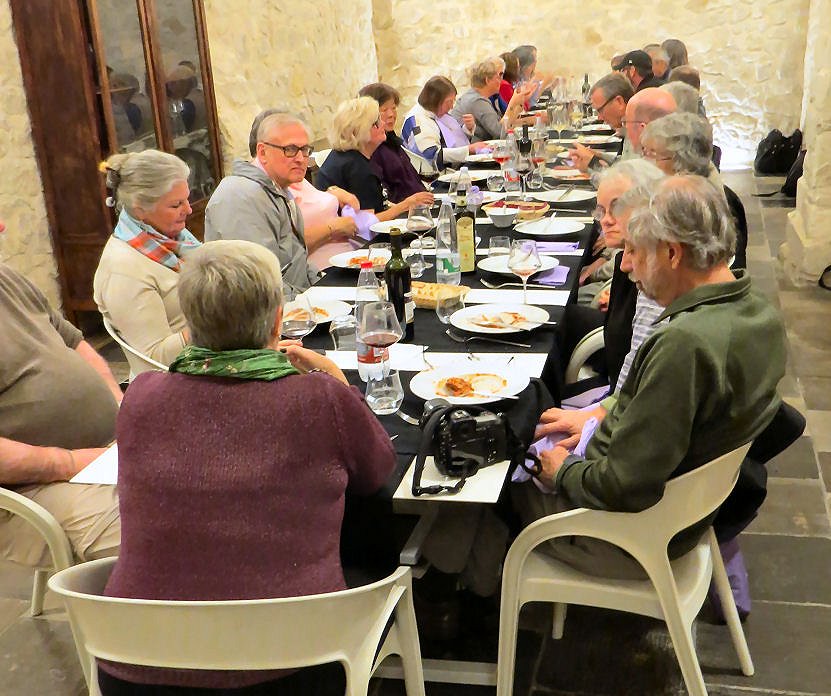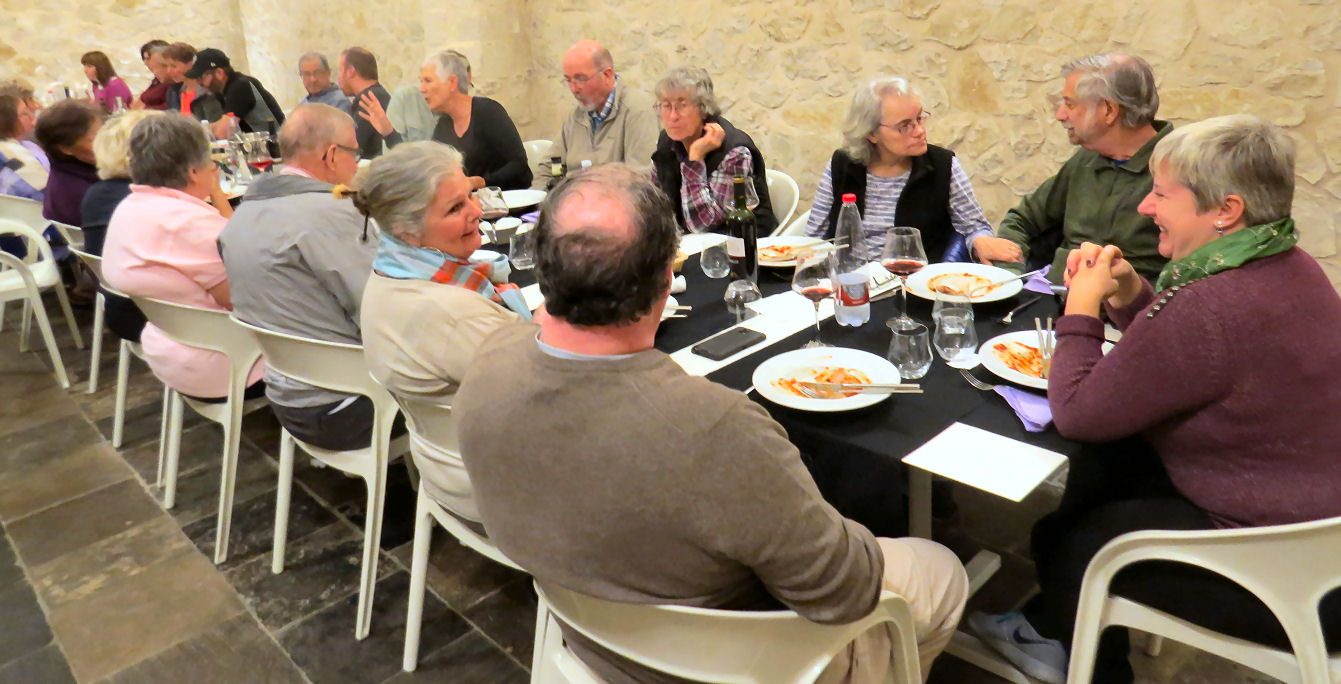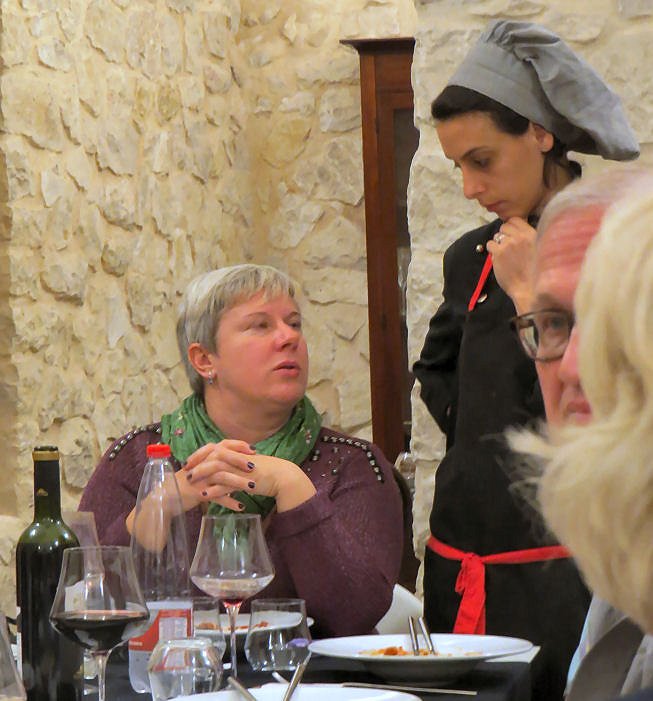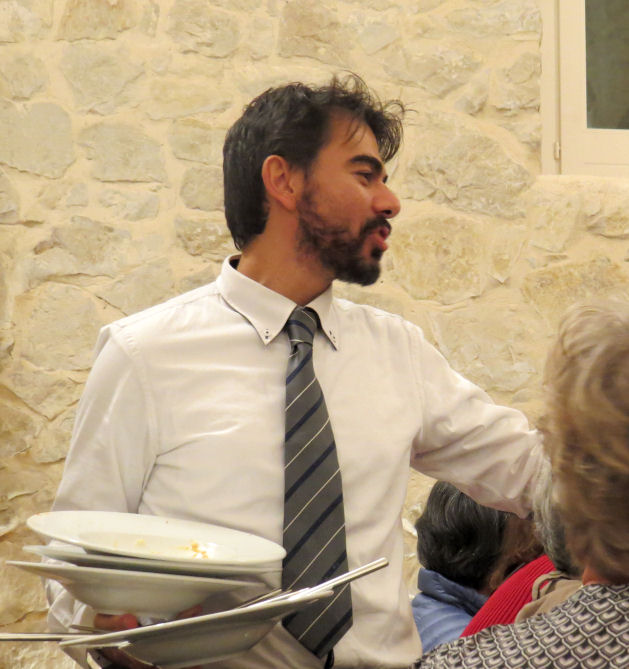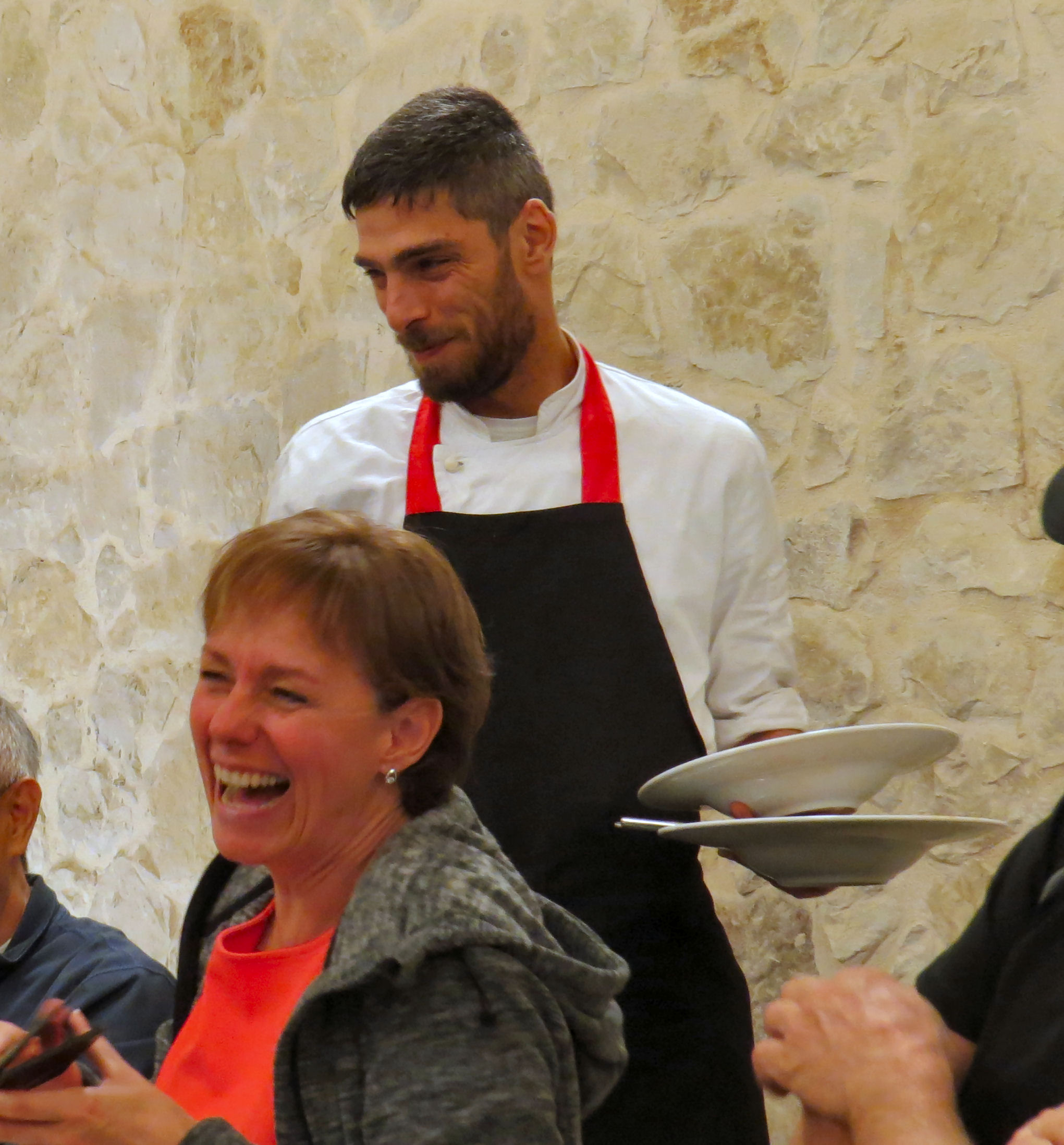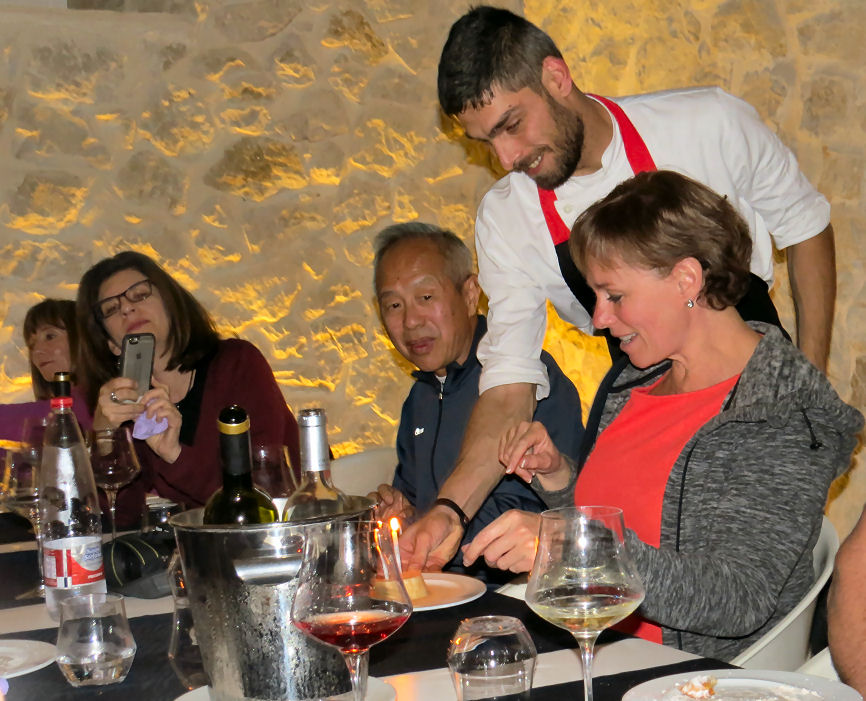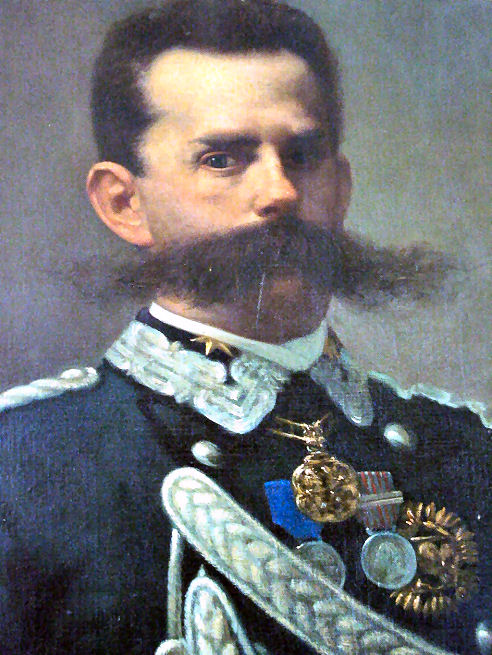I slept straight through the night until about seven. As soon as I arose and started moving around, however, I began to cough repeatedly. By the time that we went to breakfast at 8:15, I had blown my nose enough times that the cough was no longer so noticeable.
Breakfast at the hotel was in a place that was only accessible from the outside. We walked toward the hotel office, turned left into an alleyway, and then ascended some stairs. The setup for breakfast was uncomfortable. Only two or three tables were in the area of the bar and the buffet. A few more were in a room that was separated from that room by a short corridor.
The hotel's employees would cook eggs for you, but one was required to ask for them at the bar. After a few minutes so many people were milling around in that area that it did not seem worth it to me. So I settled for a salami and cheese sandwich, a brioche, a cappuccino and some apricot juice.
Today was Carol's fiftieth birthday. Everyone wished her happy birthday at breakfast.
The schedule listed this as a free day in which we could, according to the Rick Steves promotional material, “enjoy the sights, sounds, and tastes of this delectable hill town.” Susanna, however, had arranged an optional tour for us of a nearby olive oil factory. I chose to join her on the junket, but Sue opted out. I think that everyone else except Diane and Rollin went to the olive oil place.
Susanna said that the visit to the olive oil factory (oleificio) was a new thing that she was trying. Sue and I had visited a frantoio (olive press) in San Feliciano during our Village Italy tour in 2005. My recollection was that I did not enjoy the experience much then because we had arrived too soon for the harvest. The manager basically told us that farmers bring their olives to the frantoio, and they put them in the pressing machine. She then shifted into the sales pitch for her brands of olive oil. Everyone then tried some, and most people bought a bottle or two.
I was interested in this excursion because I remembered that Susanna had indicated on Saturday that the olive oil harvest in Italy began in late November or December and ran through January.[1] It therefore appeared to be a propitious time to make another visit. I joined the group that assembled at the hotel's office.
Together we walked back down to where the bus was still parked. Next to it was a much smaller bus that had been hired to transport us to Chiaramonte Gulfo, the home of Oleificio Gulino, the olive oil factory. Giuseppe was not our driver,[2] but he did join our group as a tourist. There was just enough room on the bus for everyone. The drive was only about twenty-five minutes, and so the cramped conditions were not much of an annoyance.
This time I sat on the side of the bus that was more amenable to photos. I took some shots that showed the remarkable nature of the cliff-side metropolis known as Ragusa.
Our hosts were Antonello and Alice (ah LEE chay). Since the sign on the door said that the owners were named Luciano and Eugenio, I deduced that Antonello and Alice were probably the second or third generation of operators. The room in which they made their presentation was much more impressive than the one in San Feliciano. There were lots of big machines, and it was impossible for me to figure out which machine did what. However, no noise or any other sign of life was coming from any of them.
I soon learned that all my deductions were incorrect. Antonello began by telling us that the olives grown in the region of Chiaramonte Gulfo were called Tonda Iblea. They had a hint of artichokes, cream, and tomato. They had won over one hundred awards. The Oleificio Gulino had been in operation as a family-owned and -operated enterprise since 1880. The current operators represented, in actuality, the fifth generation.
Antonio then said that the production in 2016 had been down, and the harvest, which occurred, in fact, in September and October, was already over. I was quite disappointed to learn this. I would not have come on this side-trip if I had known that we would not be able to see the process of producing olive oil in action. The immortal malapropism of George W. Bush came to mind: “Fool me once, shame on ... shame on you. Fool me... You can't get fooled again!”
The distinctive feature of this oleificio was that it was completely organic. They used every part of the harvest, and they recycled almost everything. The pits were used as biomass. The prunings were turned into wood chips and burned for heat. The electricity for the operation came from solar panels.
I wrote in my notebook that Antonio said that the product produced by their machines solidified over twenty-four days and then was allowed to mature for sixty days. I may have misunderstood this.
Extra virgin olive oil must have no more than 0.8 percent acid. Virgin olive oil could have up to 2.2 percent acid. If the acidity level is higher than that, it was just olive oil.
They used exclusively glass or metal containers. They were concerned that plastic containers might release toxins.
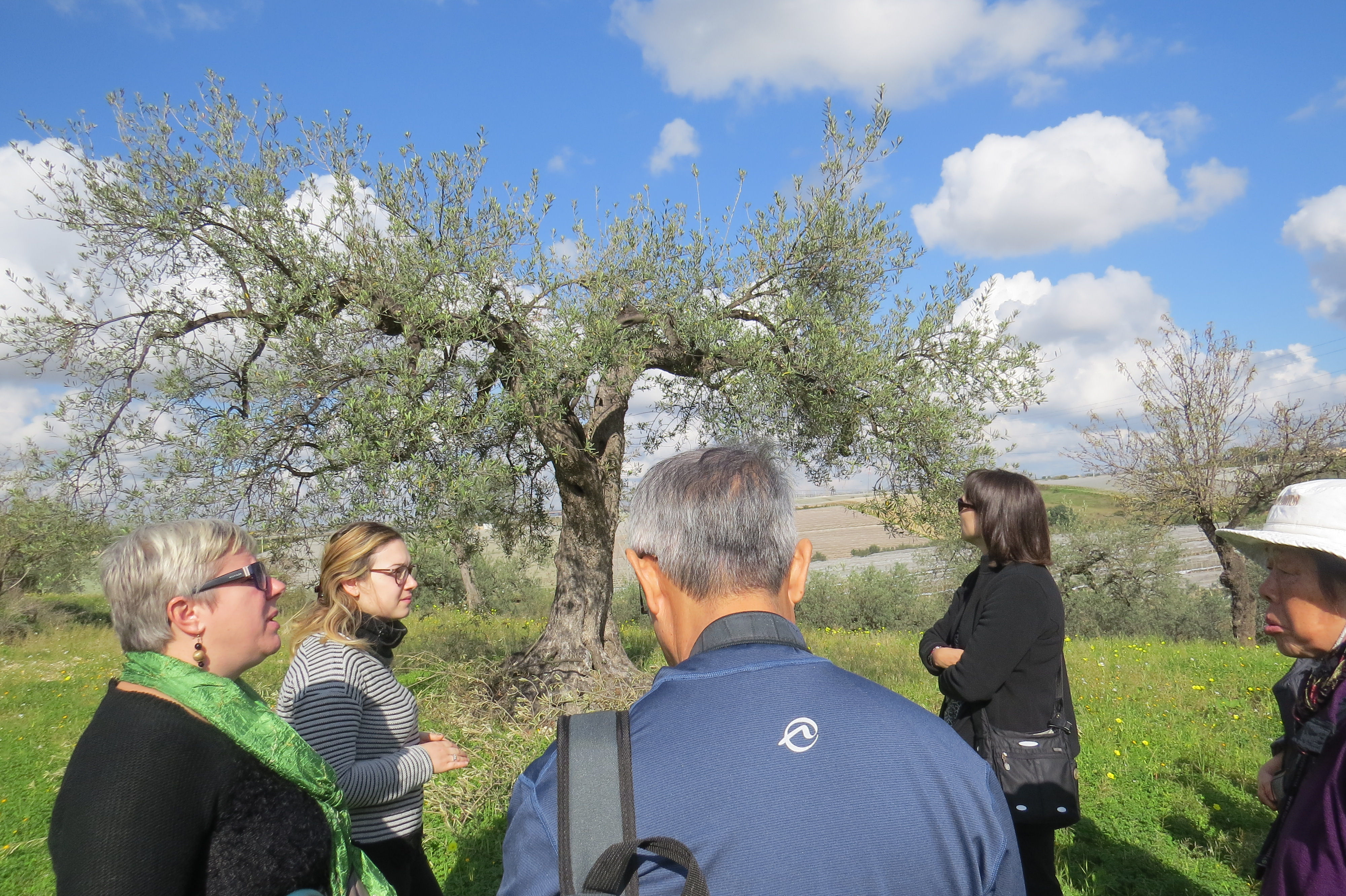
The estate included over two thousand olive trees. I was astounded to learn that they hired people to pick the olives by hand. So, ninety-nine percent of the work was done in two or three months, and those were the same two or three months for all of the olive producers in Italy.
We were allowed to sip a little bit of their product. It almost instantly gave me a sore throat, which Antonello explained was somehow a good thing.[3] I certainly would never buy a product that produced a burning feeling in my throat even if it had won thousands of prizes.
They did offer some snacks of toast or crackers with a wide variety of jams, which they conveniently offered for sale. I liked the tuna-flavored one, but not enough to shell out cash for the privilege of carrying it around for several days.
We then took a very short walk in the one of the olive groves with Alice. She told us that the average age of the trees was a little less than one hundred years. Whenever they planted a new tree, they had to wait for twenty-five years before it started producing fruit.
For the most part the trees required very little maintenance. Occasionally they watered them a little if the flowers did not appear when expected. Sometimes they needed to return to pick the fruit during a second harvest.
This part of the trip was disappointing, but it was not as boring as the next phase. The little bus took us up to the town of Chiaramonte Gulfi. Susanna walked with us to the main square, which had a nondescript monument to the soldiers from the area who died during World War I.[4] The town appeared almost deserted. I did not see any store that interested me. I was, however, baffled by a building on the far end of the square that had a sign over the front door that read Società Operaia di M.S. Umberto I. I knew that Umberto I had been one of the Savoy kings after Victor Emanuel, but it seemed strange to me that a workers' society would name itself after a member of royalty. Furthermore, I knew of no association between Umberto I (or any of the other Savoy kings) and this area.[5]
Several people bought a gelato from a bar that was near the monument. Ann said that the pistacchio was the best that she had ever tasted. I loved pistacchio, but it was much too cold out for me to try a gelato. I might go for one if it was at least eighty, but the temperature on that day was in the low sixties. I would have been shivering all the way back to Ragusa.
On the bus ride back to Ragusa we saw the Comiso Airport, which had provided the area with low-cost access to the rest of Europe. It was expected to bring more tourists to the region. Previously, Sicily had airports only in Palermo, Catania, and Trapani.
When we returned to Ragusa, we had to climb back up to the hotel. On the street before Via Ioppolo I was following a truck. It stopped abruptly. The driver waved me past him and then took out a sign indicating that the road was closed and placed it behind his truck. The road was so narrow that it was impossible for even a very small car to get by. If I had not had my camera packed away in my backpack, I would have documented this event.

The only reasonable place that we found was Il Barocco, which was the first restaurant listed in the Lonely Planet guide. Only one other table was occupied when we arrived. Three gentlemen were enjoying what appeared to be a business lunch. One of the men wore a sports jacket that was cut short in the torso. The only other person whom I had ever seen wearing such an outfit was Chico Marx. I desperately wanted to take a photo of this new fashion trend, but I could not think of a way of doing so without being intrusive. If my view screen had been operational, I probably could have managed at least one shot.
It was a little disturbing to learn from the waiter that the restaurant offered neither pizza nor pasta for lunch. Rather than wander around for half an hour looking for somewhere better, we decided to eat at Il Barocco anyway. I had pork chops and mixed vegetables, which were both pretty good.
Sue also liked her meal well enough, but after we had walked around for a few minutes—long enough to learn that Gelati DiVini was closed—Sue needed to find a restroom, and the best bet in this pseudo-ghost town was to return to Il Barocco.
It was hard for me to fathom that we had found ourselves in an Italian town where it was nearly impossible to find pizza or pasta, and the most famous gelato place was not open during daylight hours. I began to rethink my previous ideas about planning. The only planning that would have helped in Ragusa would be based upon local knowledge about the times when various places were open and what the proprietors offered in the off-season.
Sue and I located the bank-operated ATM. I was surprised to discover that I had failed to don my money-belt that morning. My debit card was back at the hotel. Sue, however, had hers with her, and she successfully withdrew €200, which would probably suffice for the rest of the trip. Unlike the other machines that we had used, this one did not disclose its exchange rate.
We returned to the room. I used the hair dryer on my socks and underwear. This seemed to help, but they were still damp.
At a little before five Sue and I ambled over to the reception desk for the cooking class. From there the group marched over to the hotel's restaurant, which was known as La Terrazzo dell' Orologio, for another cooking lesson. This time the lesson took place in a rather spacious location that included some chairs and a fair amount of wine. I expected Sue to be quite interested in this process, but she declined to participate, as I also did.
I took quite a few photos. I could have again profitably made use of the camera's display screen and my monopod. After an hour or so and perhaps one hundred photos, I began losing interest in the whole process. When they ran out of wine, my interest dropped to zero.
Here is the recipe for serving four. I corrected the obvious typos, but I left the exact phrasing of the second to last sentence even though it made no sense to me. It was also unclear to me whether one used both beef and pork or just one. 100 grams is .22 pounds.
Rice mixture: 400 grams Rice + 4 grams saffron + 1 liter meat stock
Filling: 100 grams fresh Ragusano or Provalone cheese + 1 egg
Meat ragout: 100 grams ground beef + 100 grams ground pork + 1 small onion + 1 carrot + 3 spoons olive oil + 100 grams peas + 100 grams tomato sauce + salt and pepper
Coating: 2 tablespoons water + 1 tablespoon white flower + 3 cups breadcrumbs
Boil the rice in the meat stock until cooked to 15/17 minutes. Add the saffron, salt and pepper, and the grated cheese to the rice and let it cool. Simmer the onion with 2 spoons off olive oil. Then add the ground beef/pork and saute until the meat chages color. Add the peas and cook for at least 20 minutes at moderate heat. Then let the sauce thicken.
With the rice previously prepared, form one little ball. Make a pocket in the center to place a spoon of sauce and 2 or 3 small cubes of cheese and a quarter of a hard-boiled egg. Close it up with both hands. Then place the balls in “pastrello” (Mix 2 tablespoons of water and 1 tablespoon of white flour) after in a bread crumbs (?). Then fry in hot oil until golden. Serve warm.
At the end of the cooking lesson the group moved over to a large dining room. All of us—including Susanna and Giuseppe—were seated on both sides of one long table. We started with the orancini that the tour members had prepared during the cooking lesson. Wendall, who had demonstrated rather unusual techniques all evening, was presented with the gigantic orancino (or maybe orancione) that he had personally fashioned.
The rest of the meal consisted of sausages, pork, pasta, salad, and, for dessert, deep-fried ravioli. It was all pretty good. At the end of the meal Carol was presented with a small cake with one candle. We all sang “Happy Birthday” to her, and she blew out the candle on the first puff.
After we returned to our room, I gave my clothes a little more hot air from the clothes dryer. I then took a shower. It was, at best, barely adequate. It took a long time for the water to get hot. After it did, it had a very difficult time maintaining it. At unpredictable intervals the water would turn quite cold before warming up again. Two nights in this hotel were enough for me.
One last gripe about the hotel: Unless you brought a miner's helmet with you, it was literally impossible to read in bed. The bedside lamps were enclosed in devices that allowed only a very small portion of the light produced by the lamp to be used while on the bed.
This day was by far the least enjoyable day of the trip so far. The dinner was fun, but for me the rest of the day was rather tedious. Others probably would disagree.
I had to take another Alka Seltzer Cold Plus in order to get to sleep, but it worked.
[1] If I had bothered to consult my journal from 2005, I would have realized that the harvest actually occurred in September. I also should have figured that no olive oil factory would schedule a tour during the busy season.
[2] Actually, as I recall, his name was also named Giuseppe.
[3] This reminded me of the diamond industry's criticism of industrial diamonds that do not have flaws that jewelers can see under a microscope.
[4] Italy fought on the side of the allies during this war and won a considerable amount of territory from Austria during the peace negotiations.
[5] I still do not understand this. Umberto I was king from 1878-1900. He was not at all associated with the workers or, as far as I could determine, this part of Sicily. His support of the Bava-Becaris massacre in 1898 made him a despised figure among leftists. The anarchists made three attempts on his life; the last was a successful plot by an Italo-American named Gaetano Bresci with a handgun.


